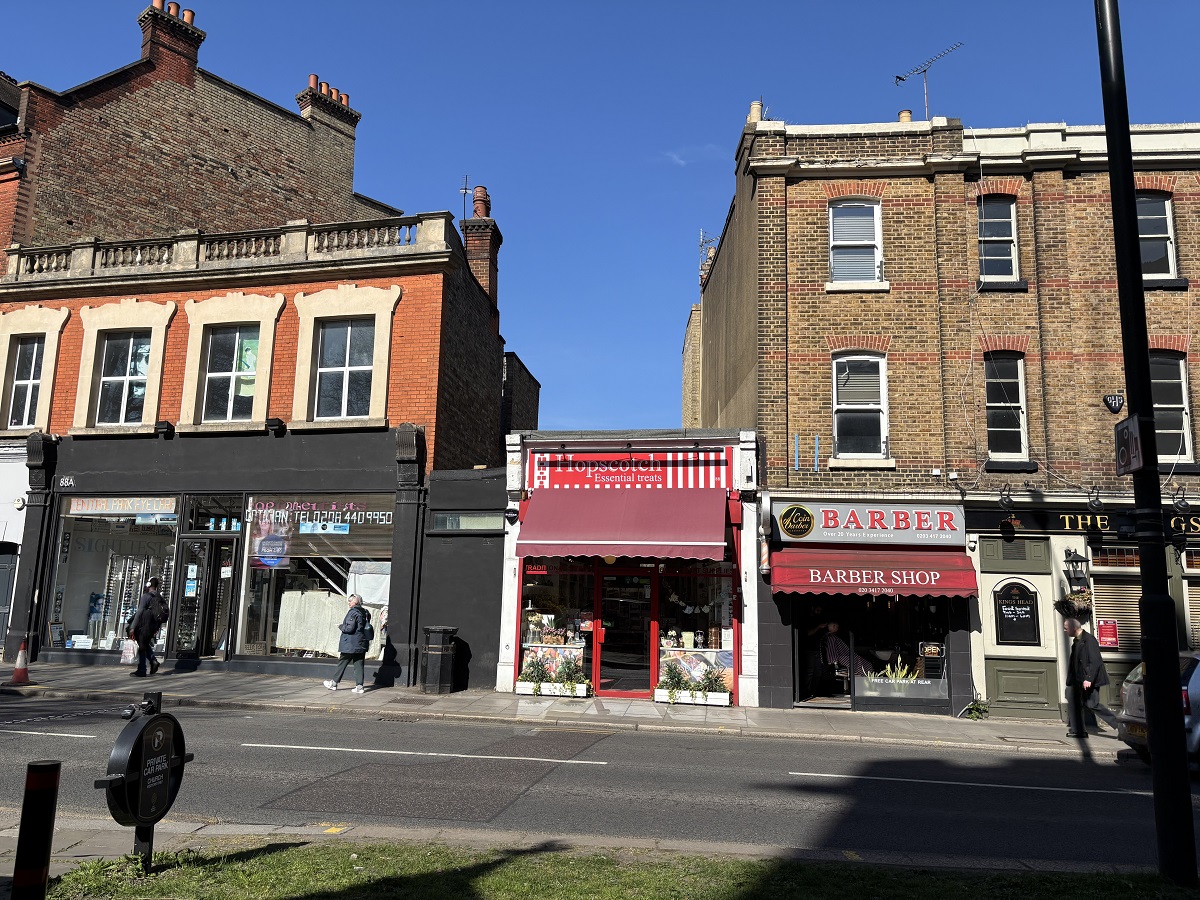
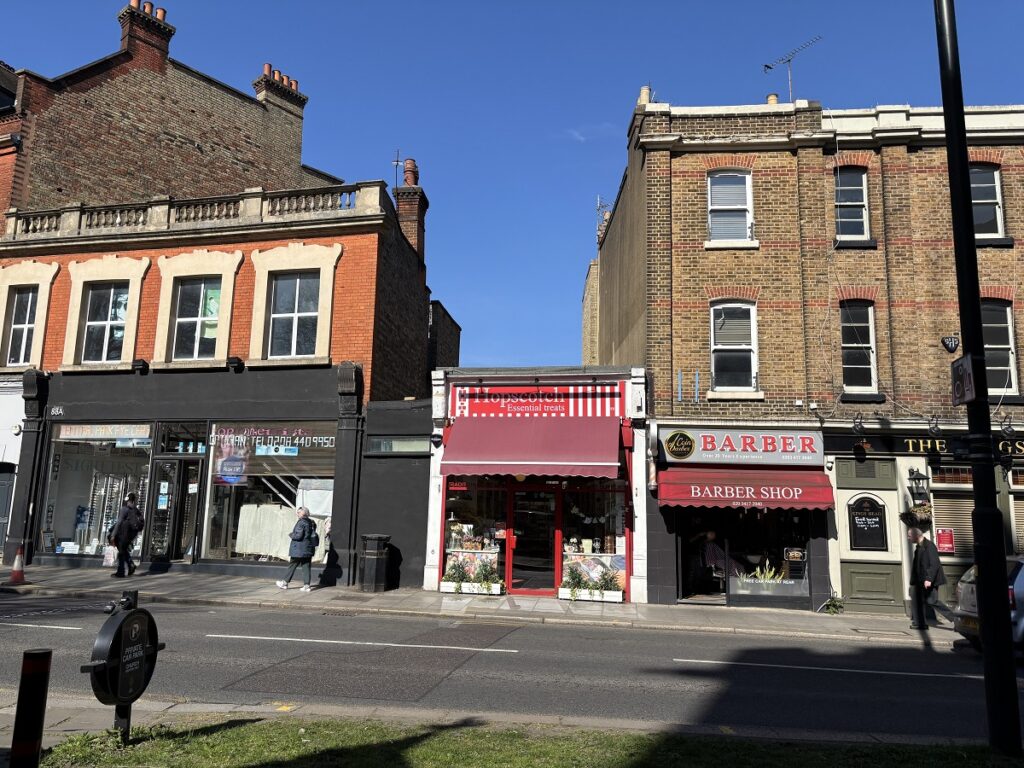
Planning applications have been approved for changes to several of the iconic buildings at the historic heart of High Barnet’s conservation area.
Work is to start in late April on a “makeover” at the town’s oldest coaching inn, The Mitre.
Further up the High Street, closer to the town centre, approval has been given to build a flat above the traditional sweet shop, Hopscotch.
Work has already started converting the first and second floors of the former Barnet Press office – now a Costa Coffee shop – into five self-contained flats.
Refurbishment of the Costa Coffee premises has also resulted – at long last — in the clock at the front of the building telling the right time.
Another very noticeable change is at the Mama Fifi restaurant — at the entrance to The Spires shopping centre – which is now resplendent with a full-length spring display of Sicilian lemon blossom.
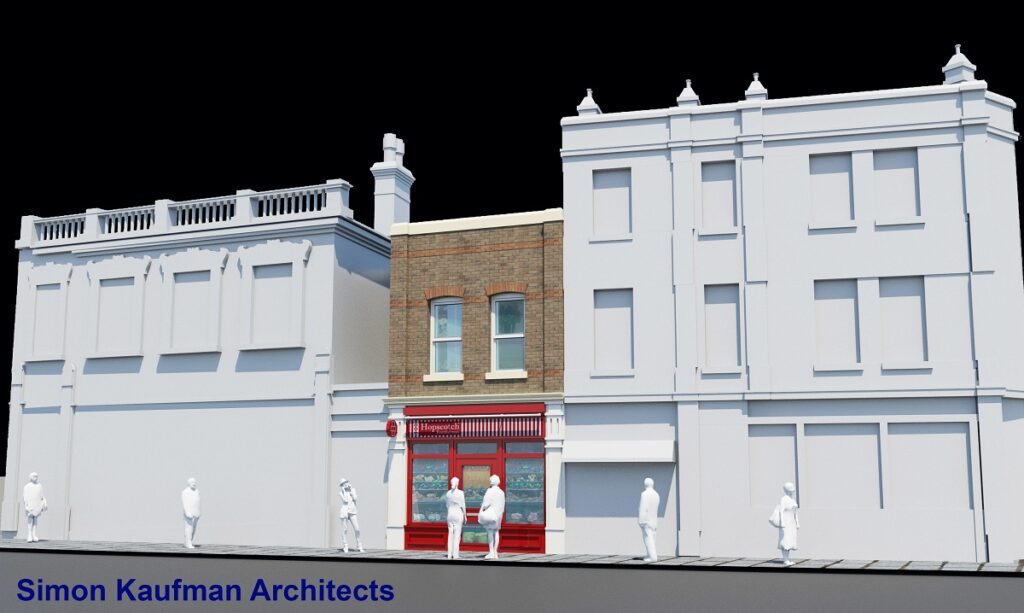
Hopscotch, a single-storey shop constructed in the 1930s, is like a missing tooth along the High Street but, under a design approved by the council, the gap – as seen above – would be filled by the addition of a one-bedroom home over the sweet shop.
Simon Kaufman Architects say the scheme has been carefully designed to preserve the character of the Wood Street Conservation Area and will provide a high-quality living space above the existing retail unit.
The project embraces a lightweight construction approach with only minimal internal strengthening to provide “a cost-effective and sustainable alternative to rebuilding from scratch” which is in full compliance with heritage and conservation policies.
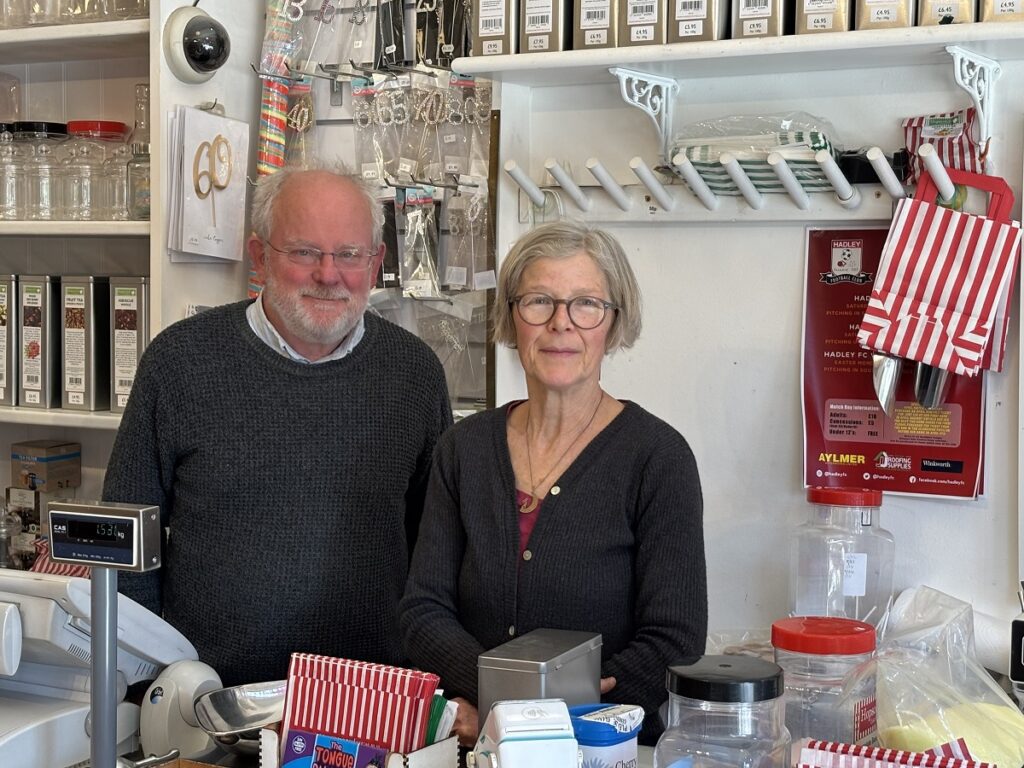
Michael and Alice Kentish, proprietors of Hopscotch, say they are thrilled that planning approval had been given as they believe providing homes above High Street shops is one way of revitalising town centres.
“There are so many under-developed properties along Barnet High Street and there is so much residential accommodation which could be provided within existing buildings.
“What we need is for the government and Barnet Council to adopt a regime which encourages the use of empty space above shops. It would provide much needed homes and help increase business along the High Street.”
Hopscotch and its rear garden are a designated area of archaeological significance as the previous medieval buildings on the site formed part of the narrow street of shops and inns beside Barnet Parish Church which was known as The Squeeze.
Until its demolition in 1933 – and the construction of the present single-storey shop – 88 High Street was a Dutch-style timber building with a gabled façade and distinctive Oriel windows.
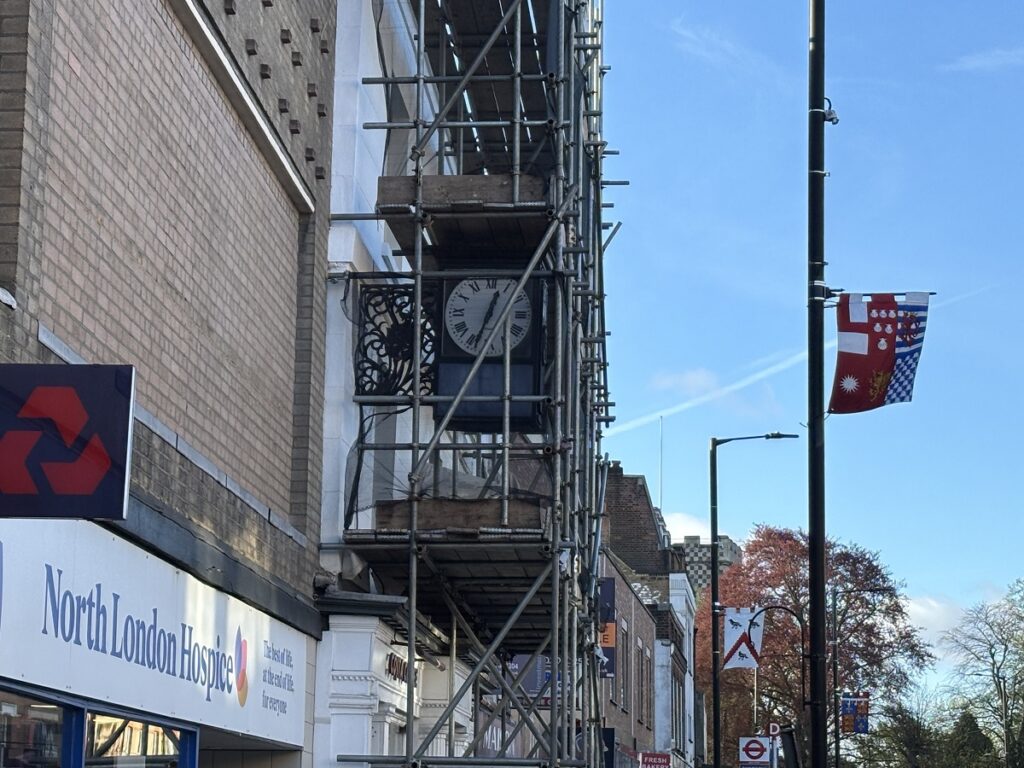
Work has already started on the refurbishment of the upper floors of the Costa Coffee shop which will provide five self-contained flats.
P2M Coffee, which has the High Barnet franchise, says the frontage of the building will be repainted. It promised that the clock, which dates back to the days when it was the home of the Barnet Press, would be repaired as soon as scaffolding was in place to allow access for a clock repairer.
True to their word, the clock was telling the right time within days — although when this picture was taken, the clock face, just visible behind the scaffolding, was still stuck at 12.34 as it had been for several years!
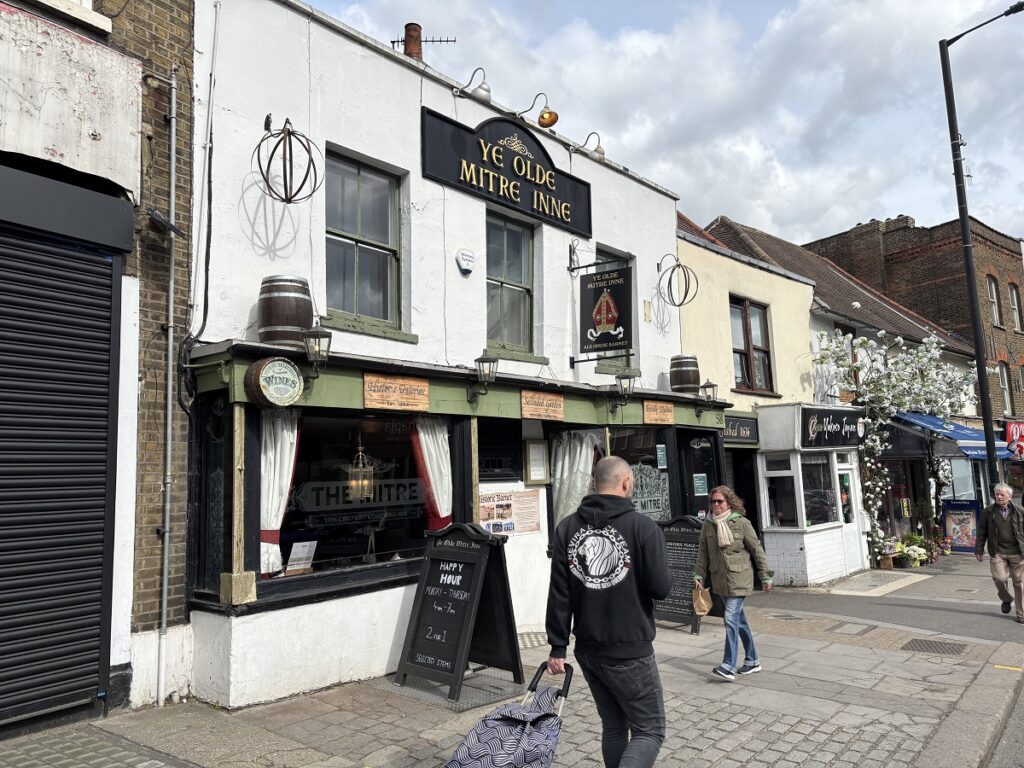
What is described by brewers Greene King as a “makeover” to give The Mitre a “fresh look” will result in the pub being closed from Monday 28 April to Friday 23 May.
Several suggestions made by the Barnet Society regarding the refurbishment were accepted by Greene King and the company’s willingness to engage with local groups was welcomed by Robin Bishop who leads for the society on planning and the environment.
Etched glass bay windows which were going to be removed will now be retained. Although only 20th century, the etched glass is attractive in its own right and illustrates the “fascinating evolution of High Barnet’s oldest inn”.
An investigation to date the timbers in the ceiling and roof has now been conducted by Historic England. If the tests indicate the timbers date from around 1360 — similar to those discovered in the neighbouring building, Elisana Florist — it could be that together with the Mitre, they represent the oldest group of timber-framed buildings in London, predating Westminster Hall.
Enfield and Barnet Campaign for Real Ale has announced that The Mitre has been voted pub of the year for 2025 – and will present the award in May.
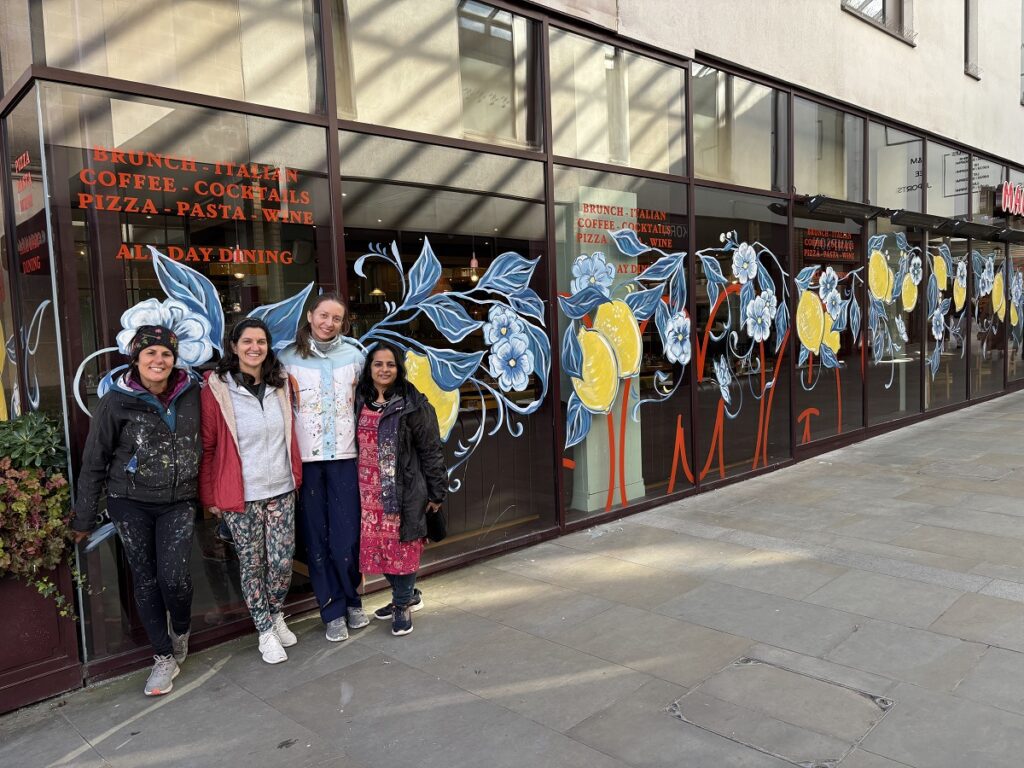
Mama Fifi restaurant – which won the 2024 prize for the best High Barnet Christmas window competition – is again attracting plaudits for its latest display.
Mural artist Alessandra Tortone has decorated the side windows in the entrance to The Spires shopping centre with a spring design of Sicilian lemon blossom.
Alessendra is seen with her team after the competition of the mural – from left to right, Alessandra, Roberta Piras, Kateryna Vilkul, and Radhika Ganapathe Ulluru.

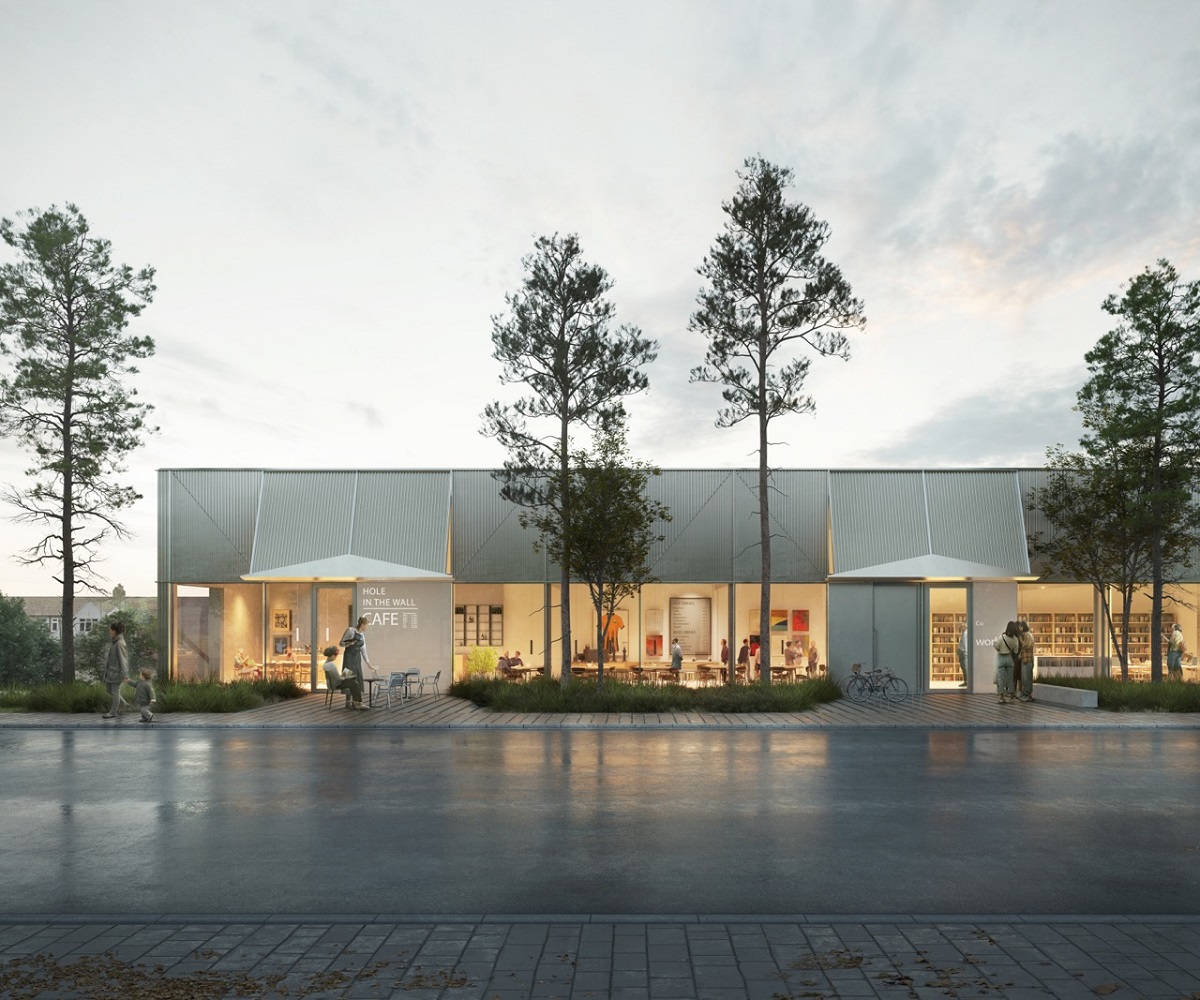
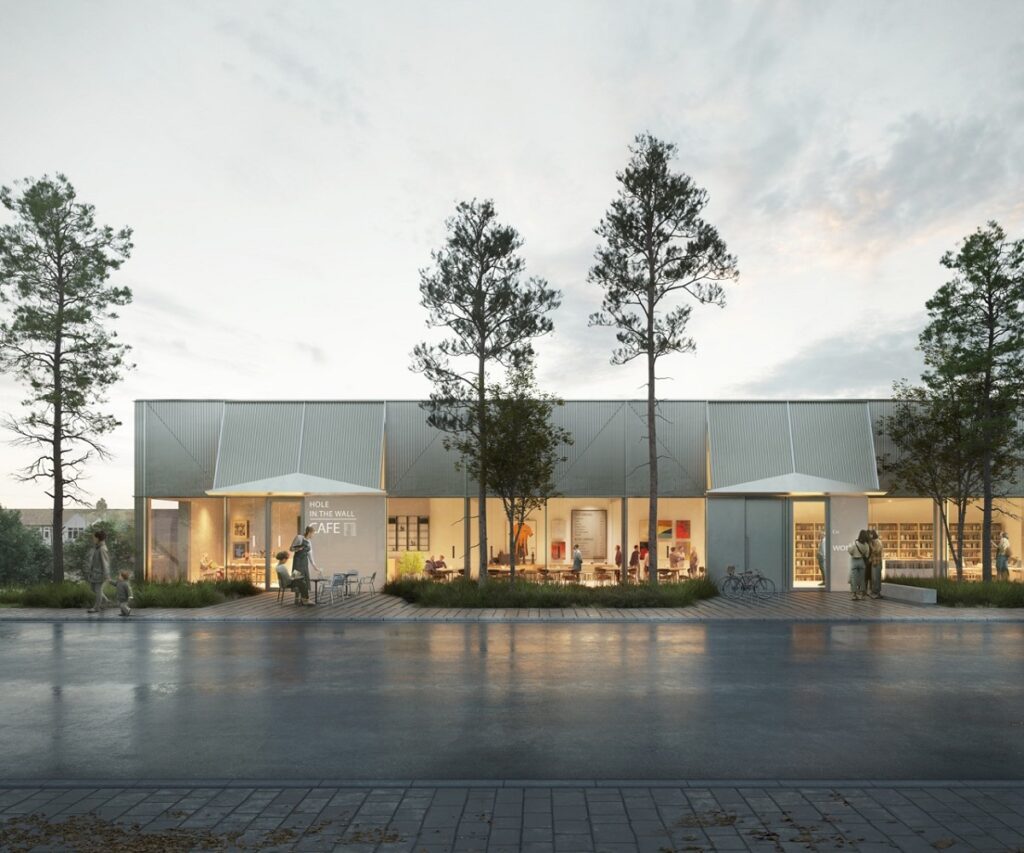
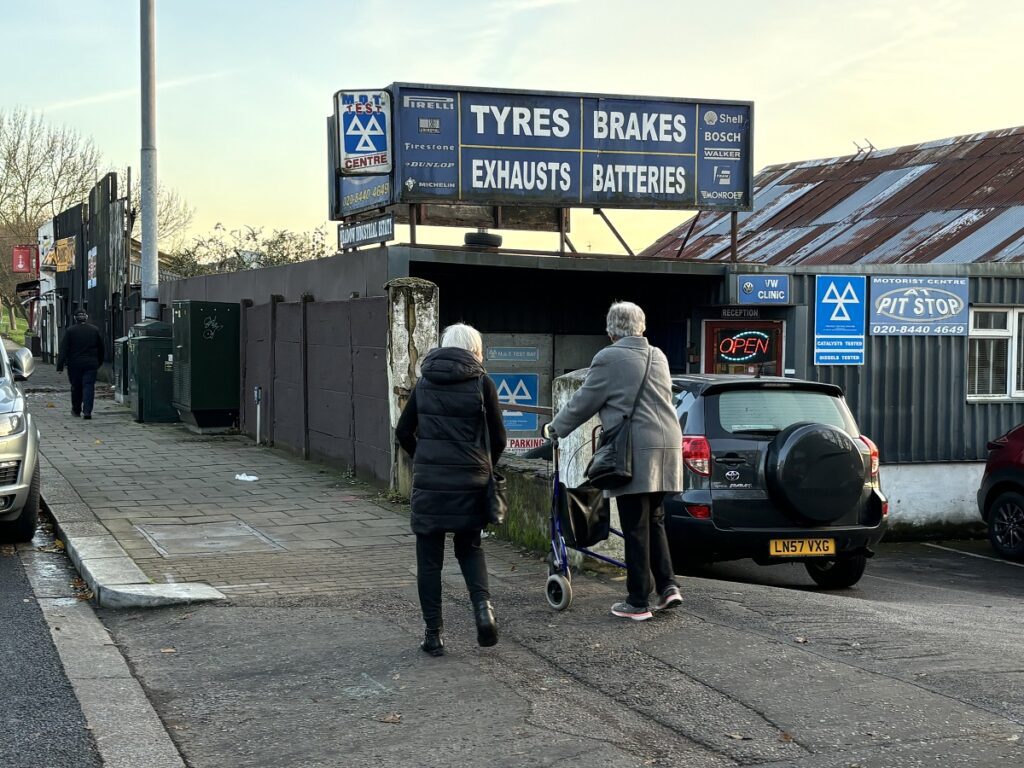
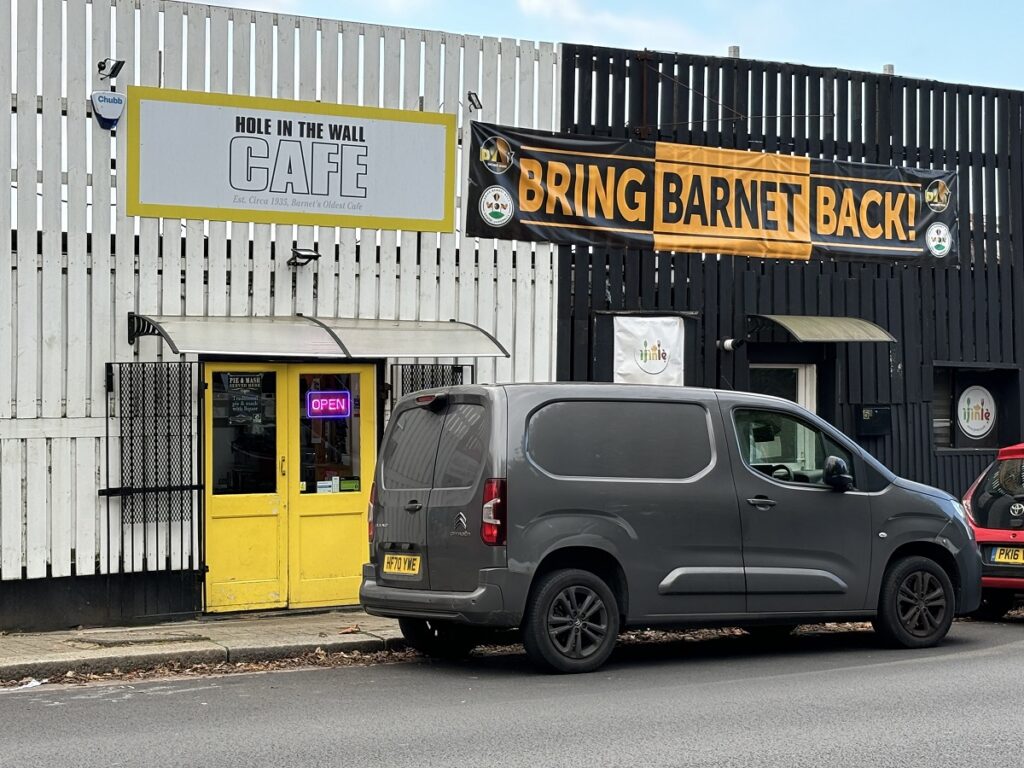
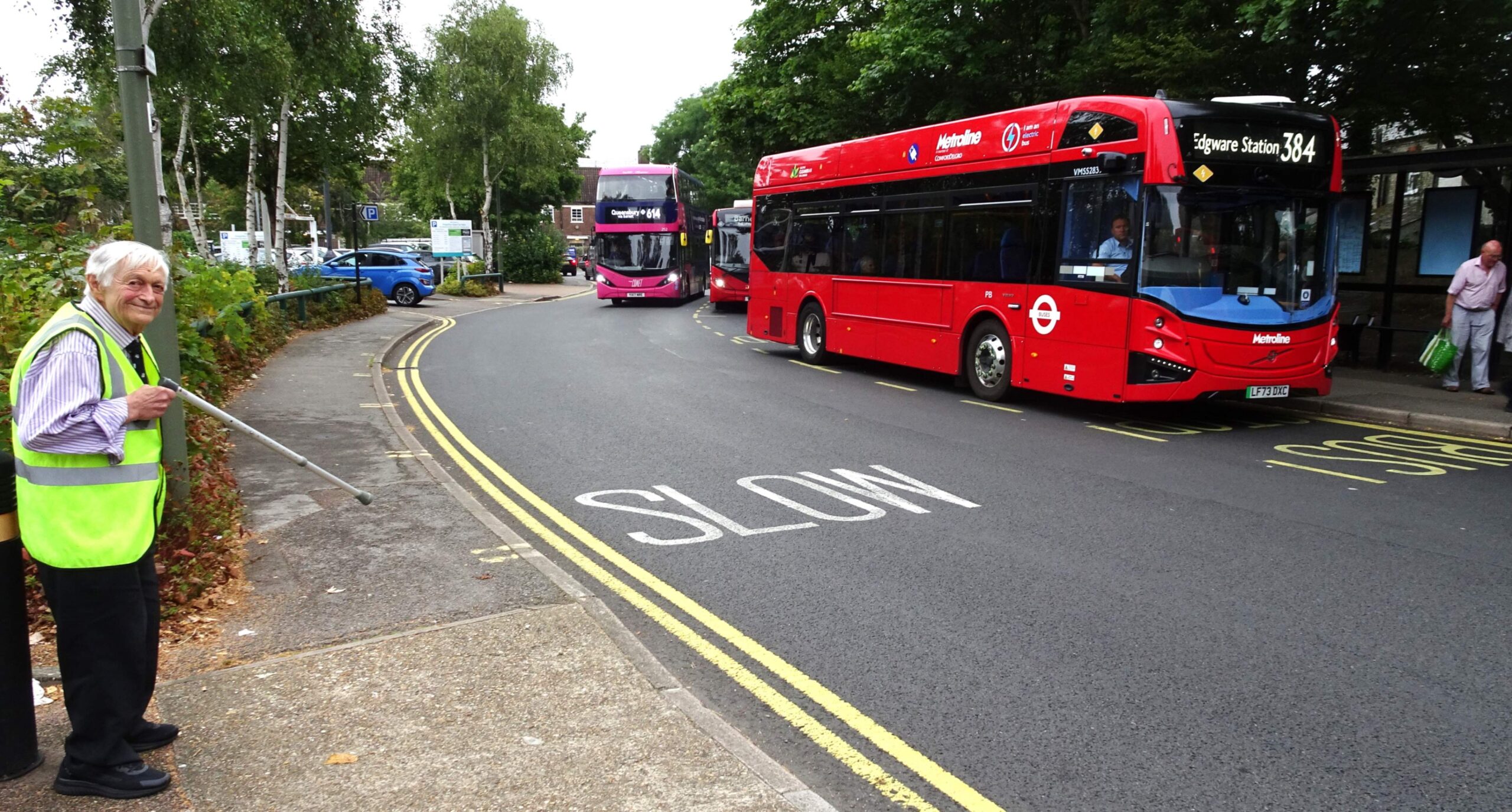
 Peter Bradburn BA, CMILT
Peter Bradburn BA, CMILT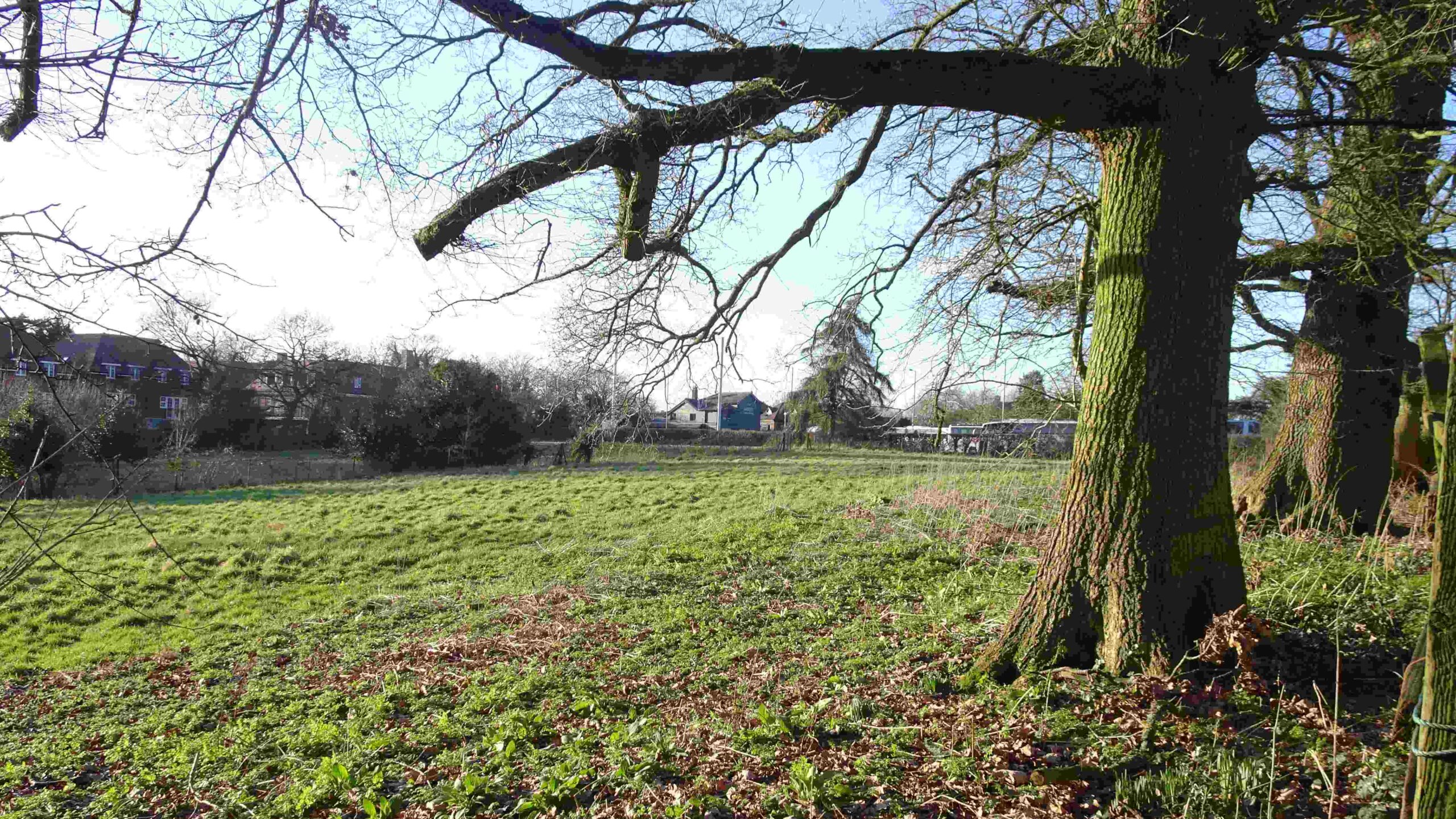
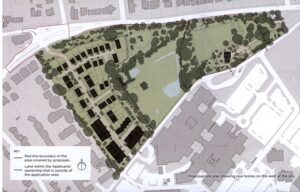
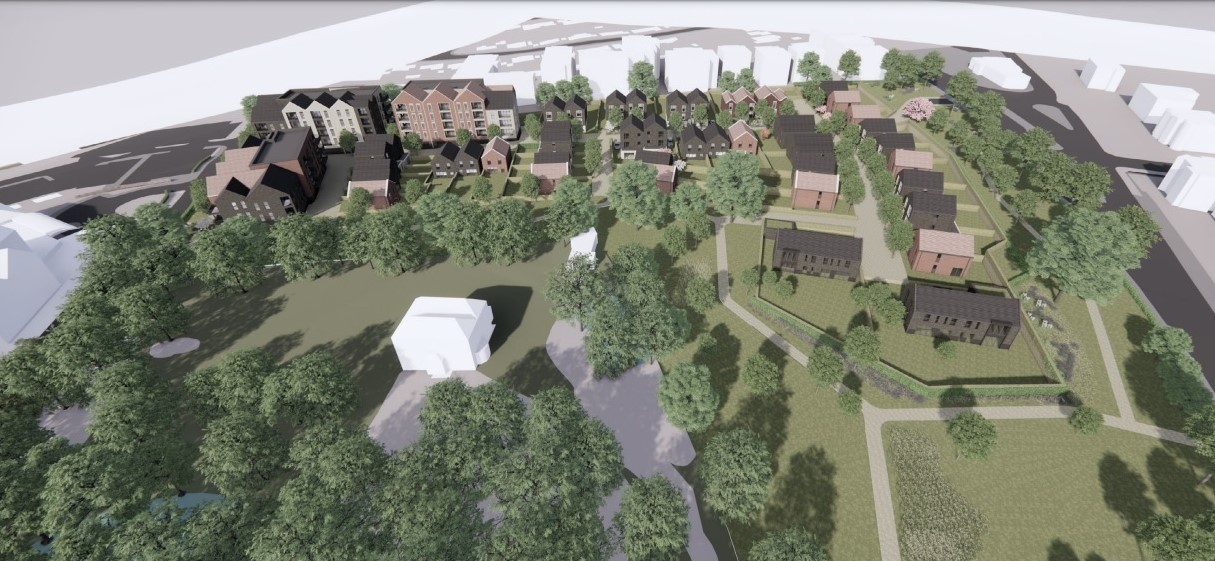
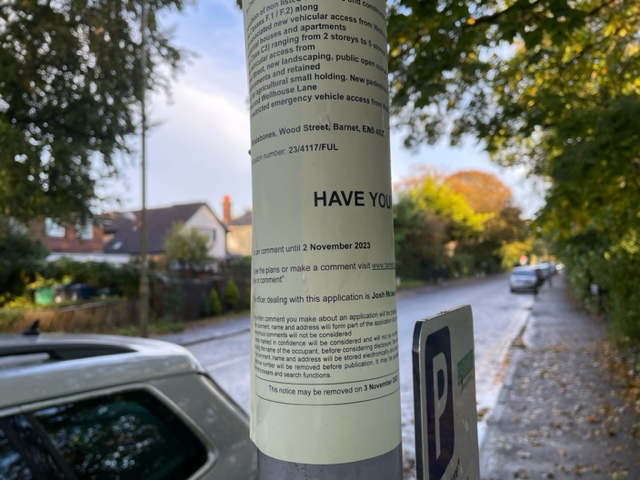
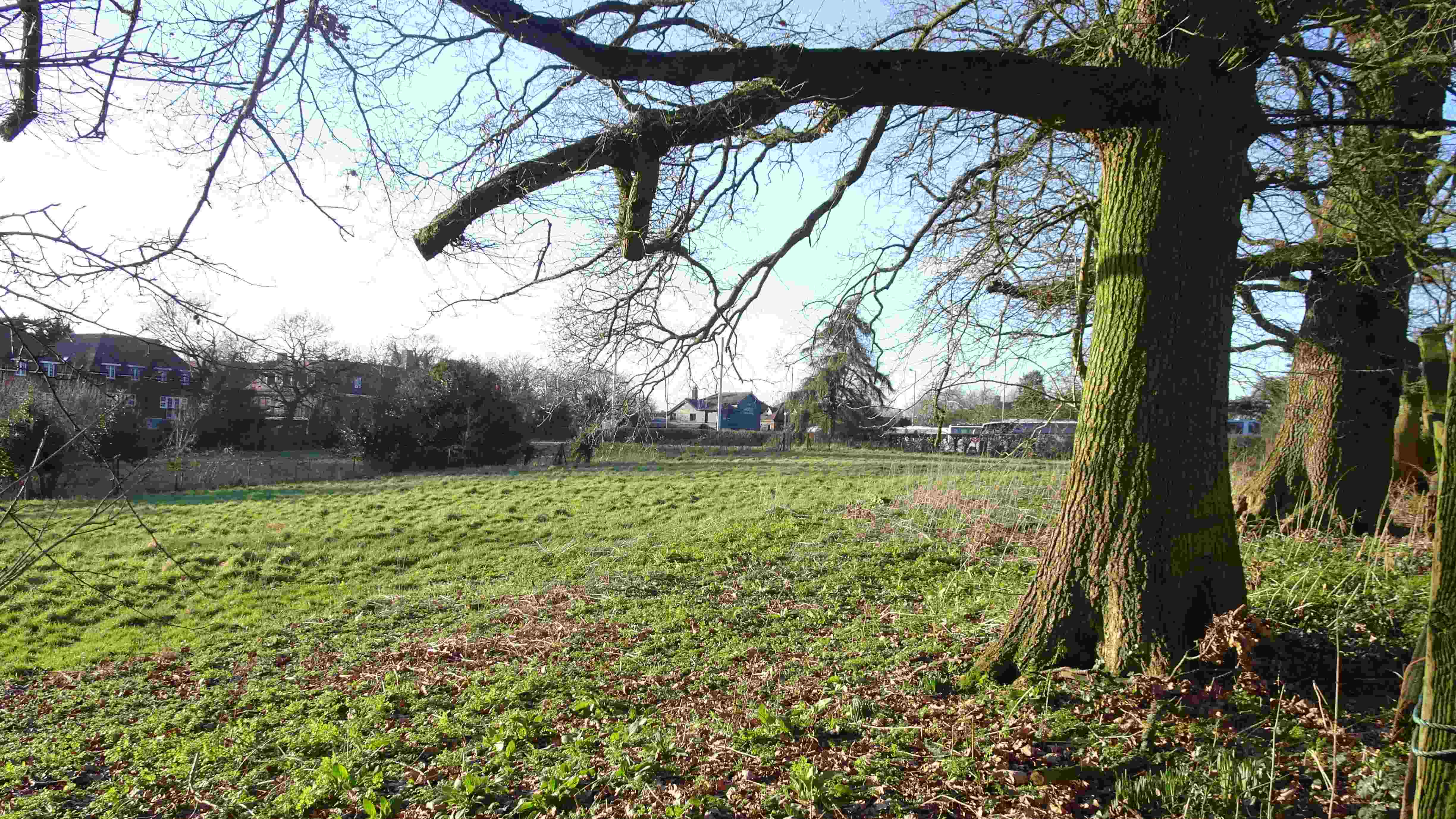
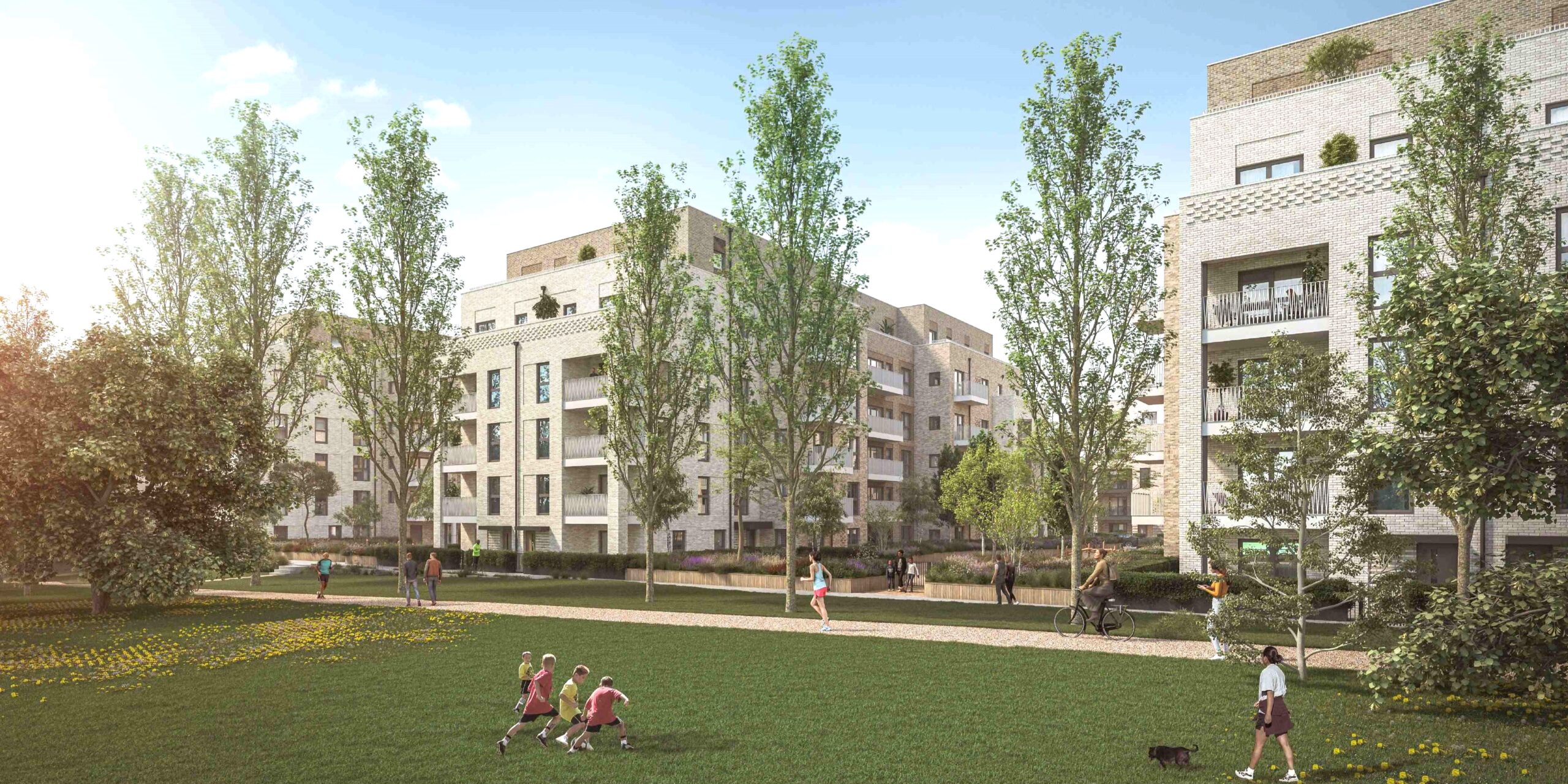
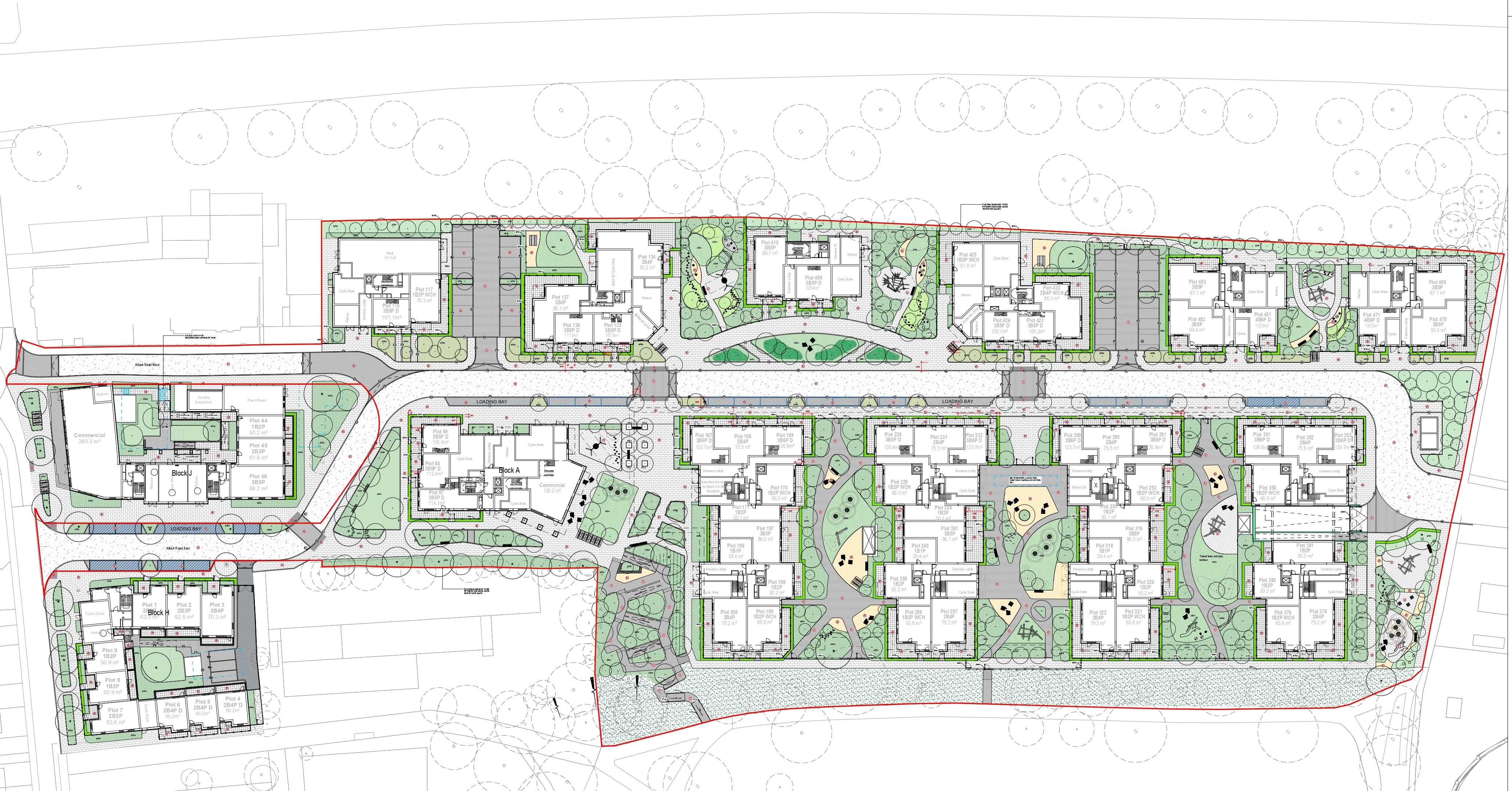
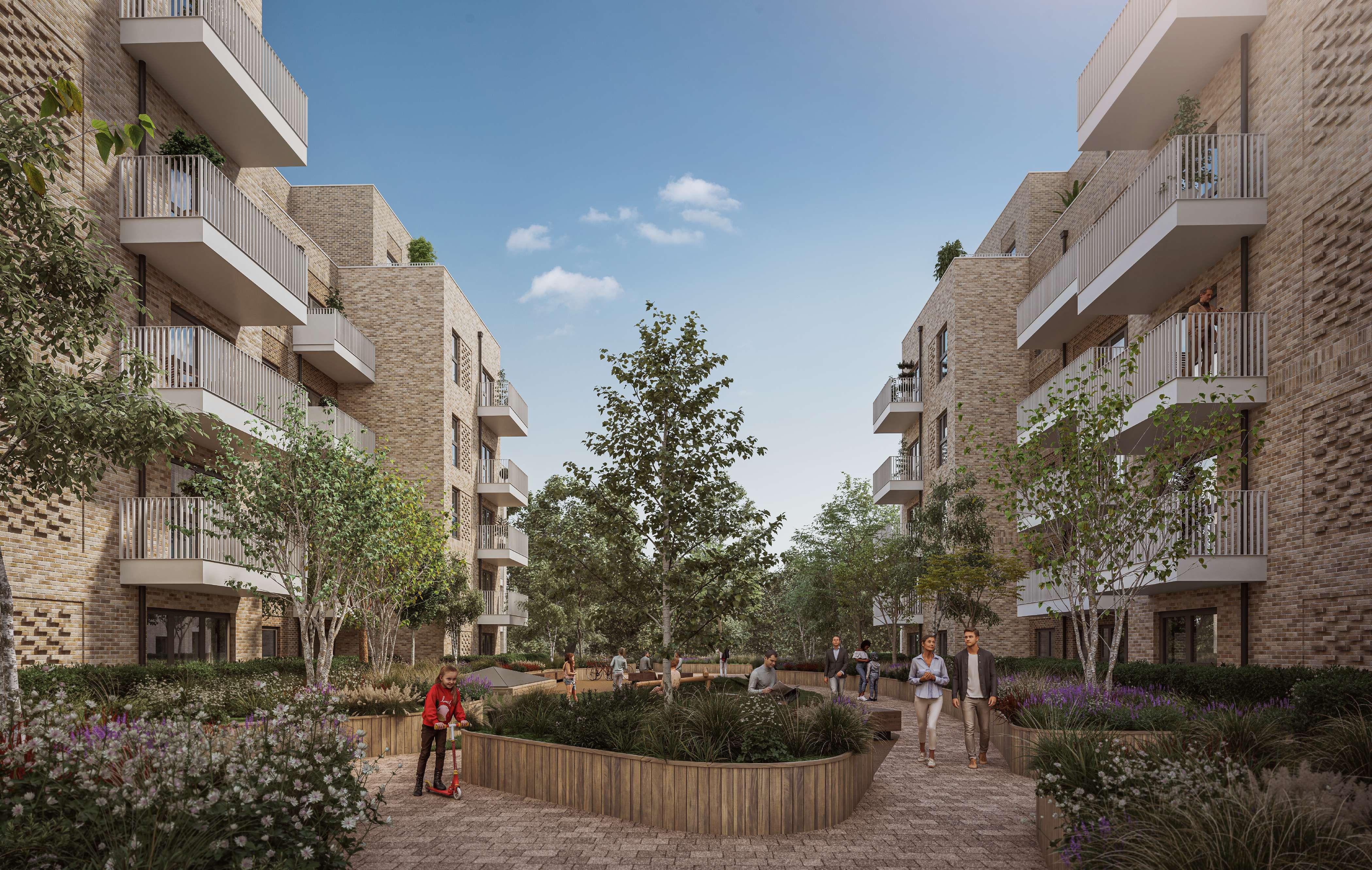
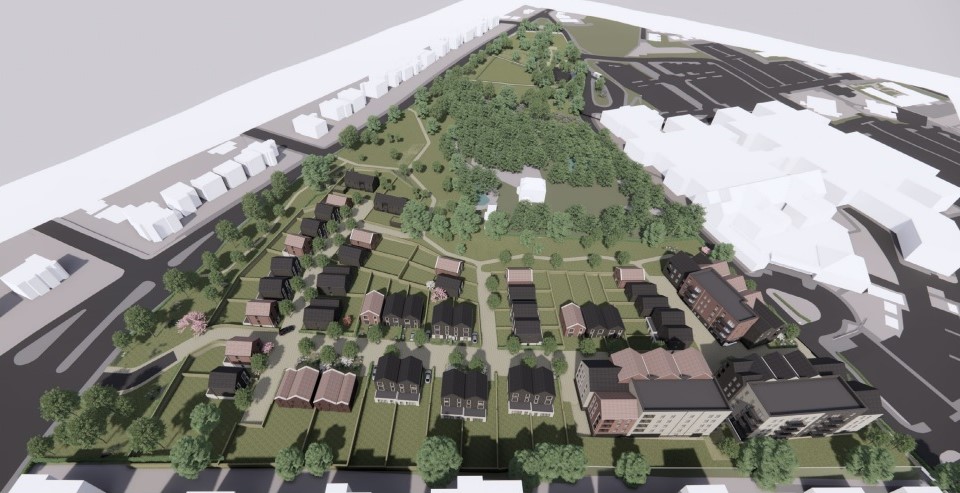
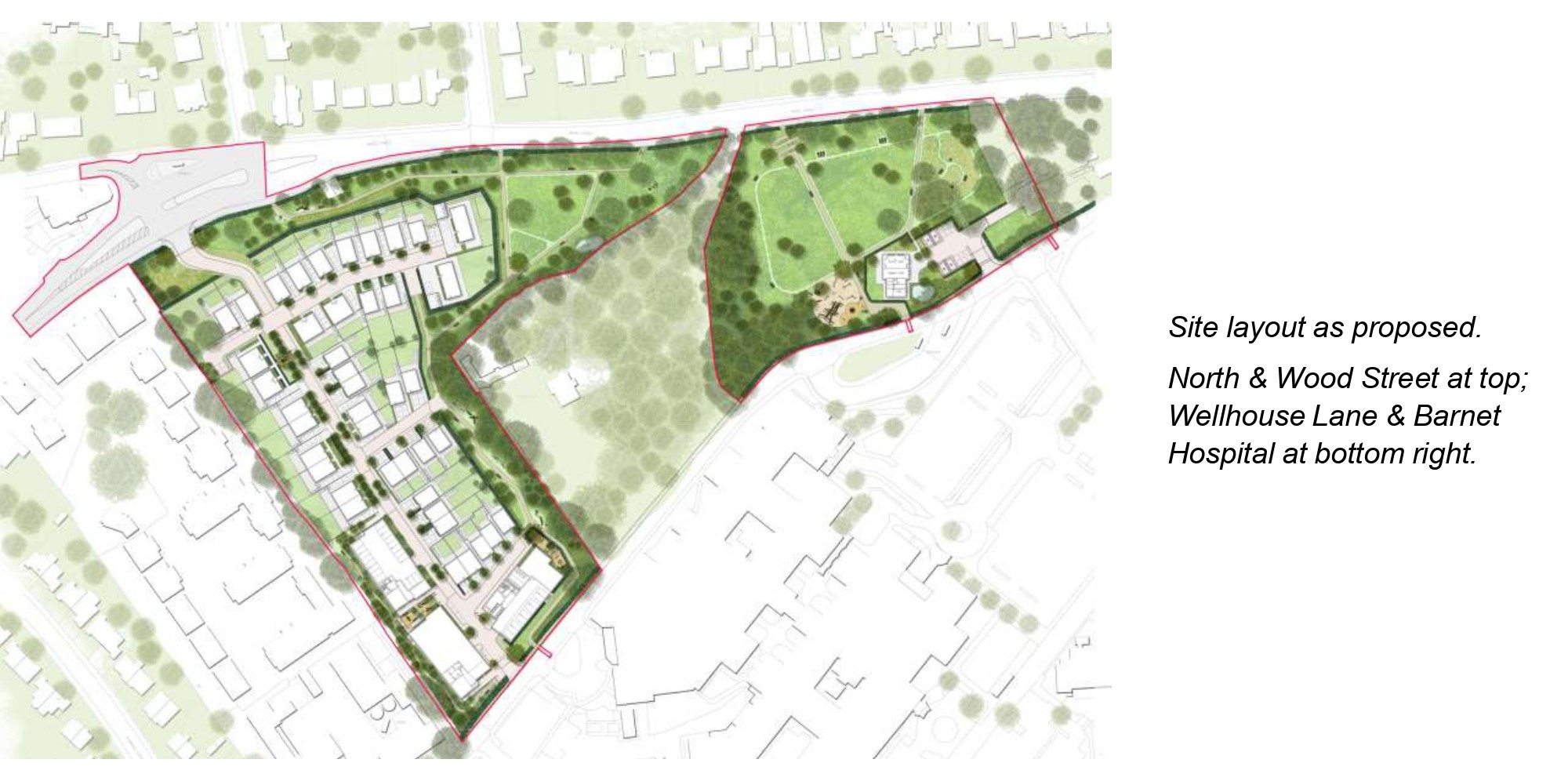
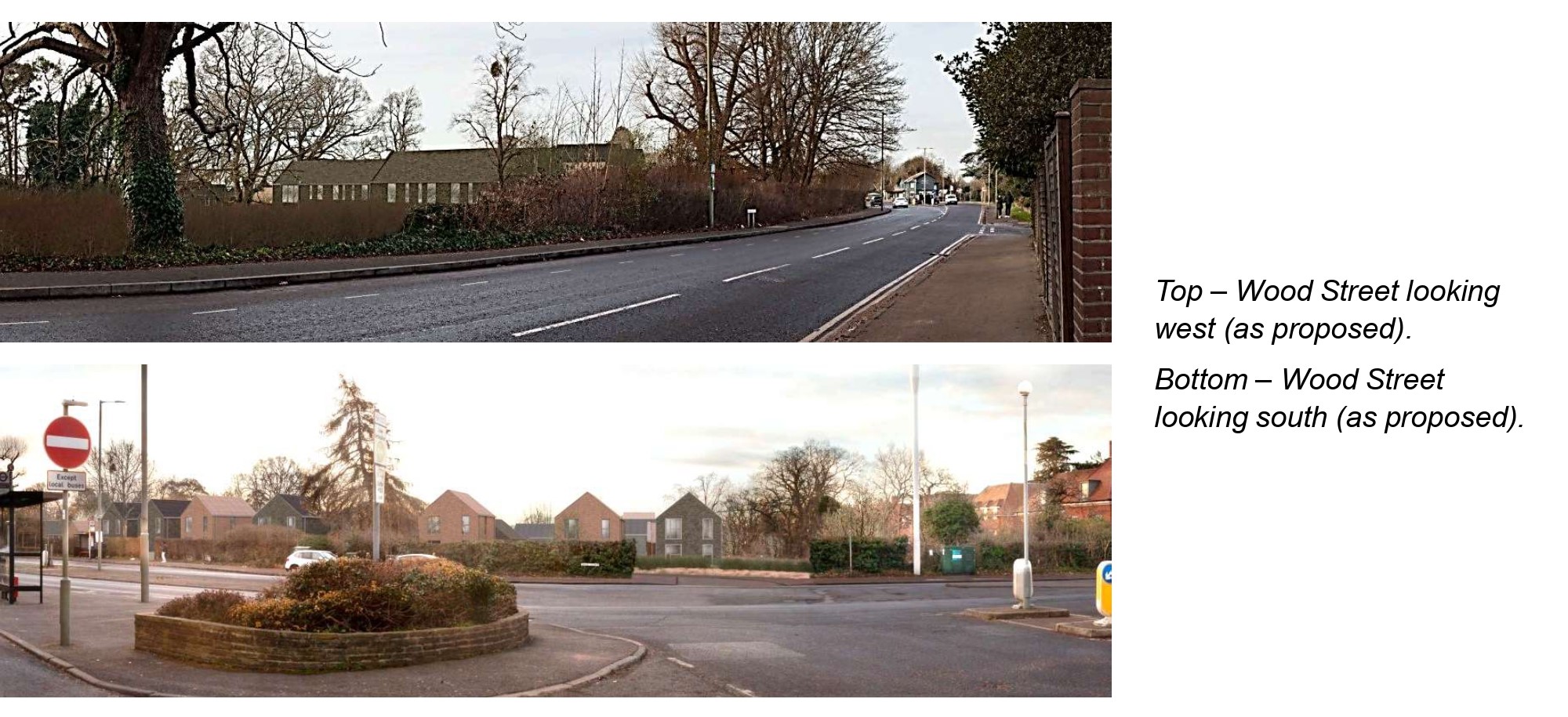
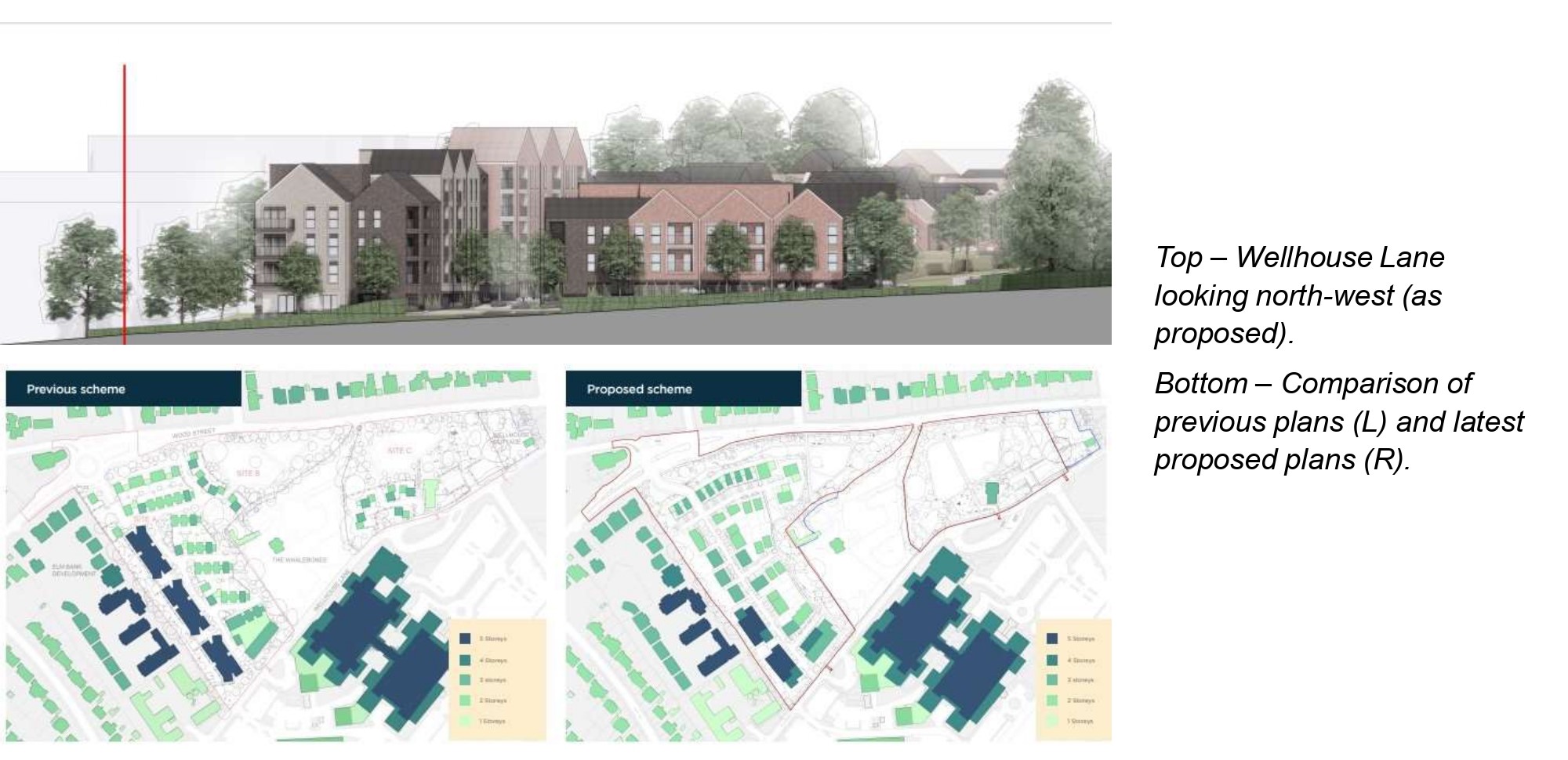

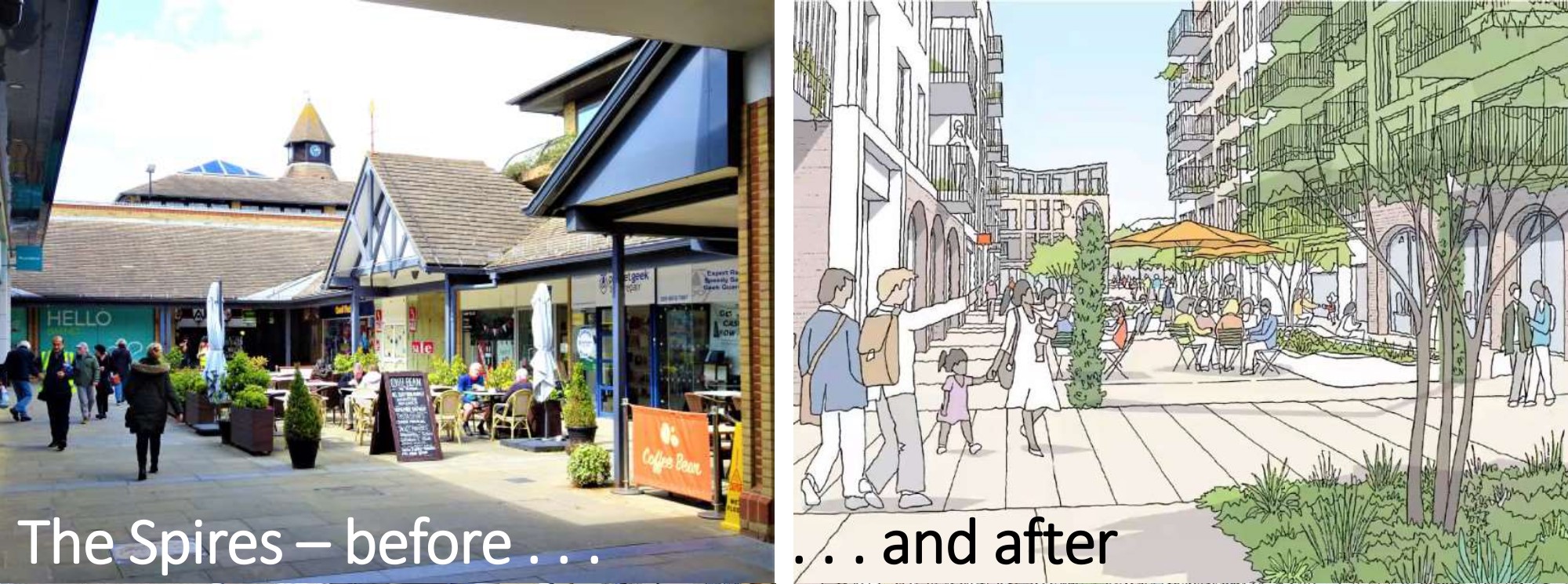
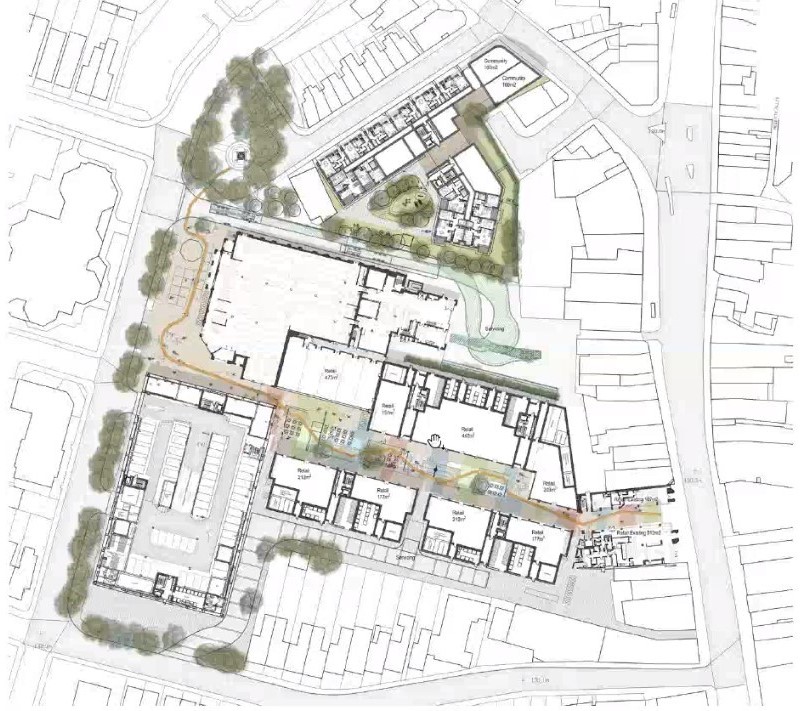


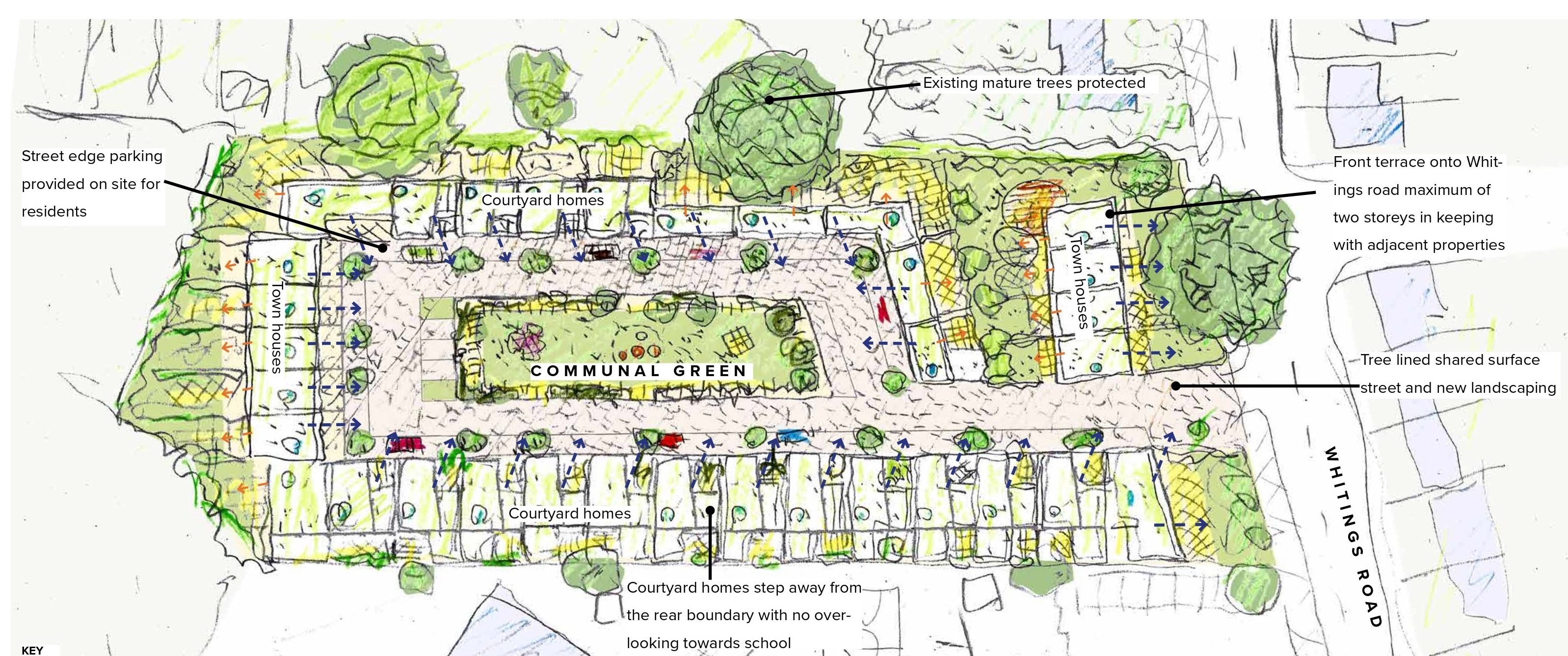
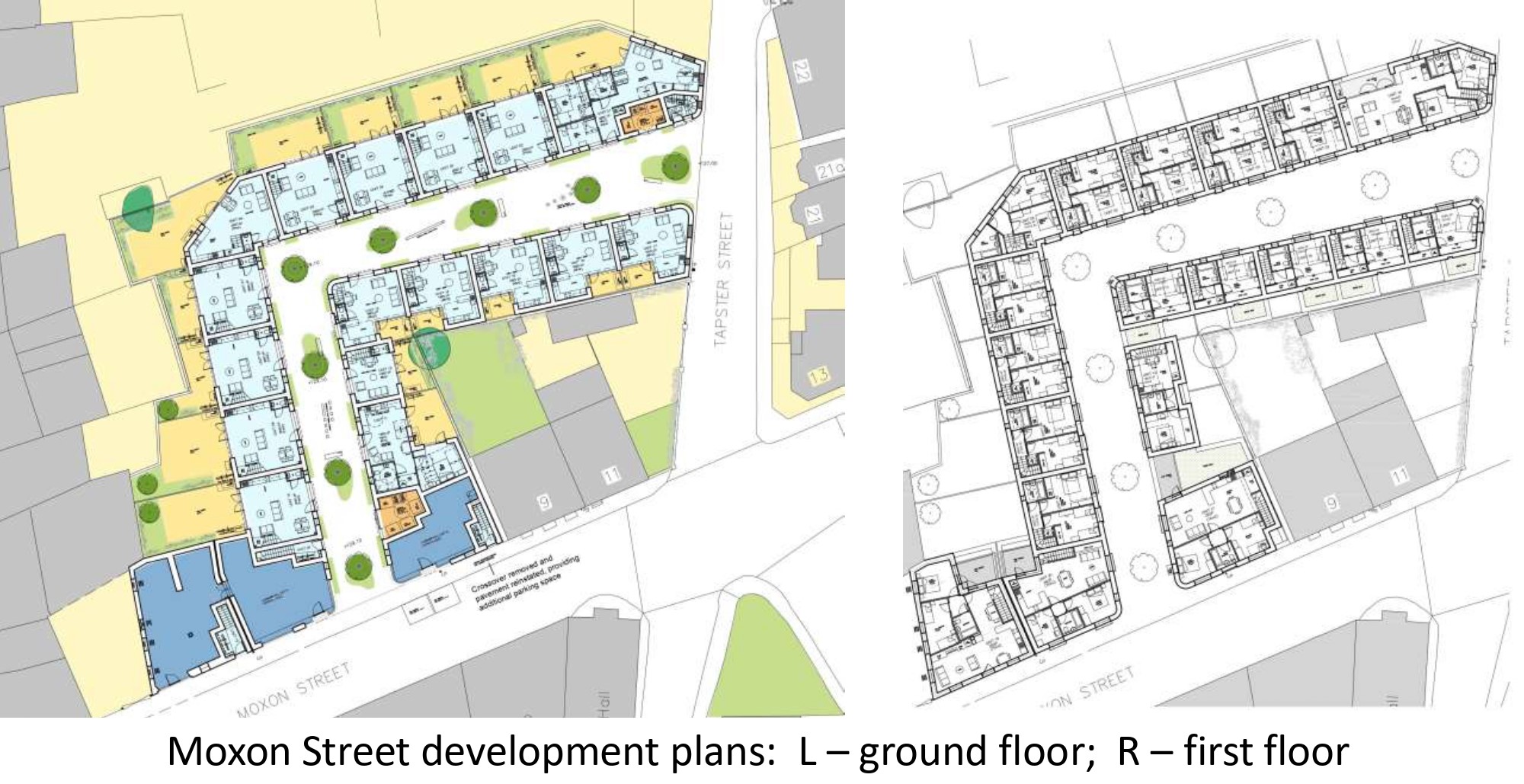
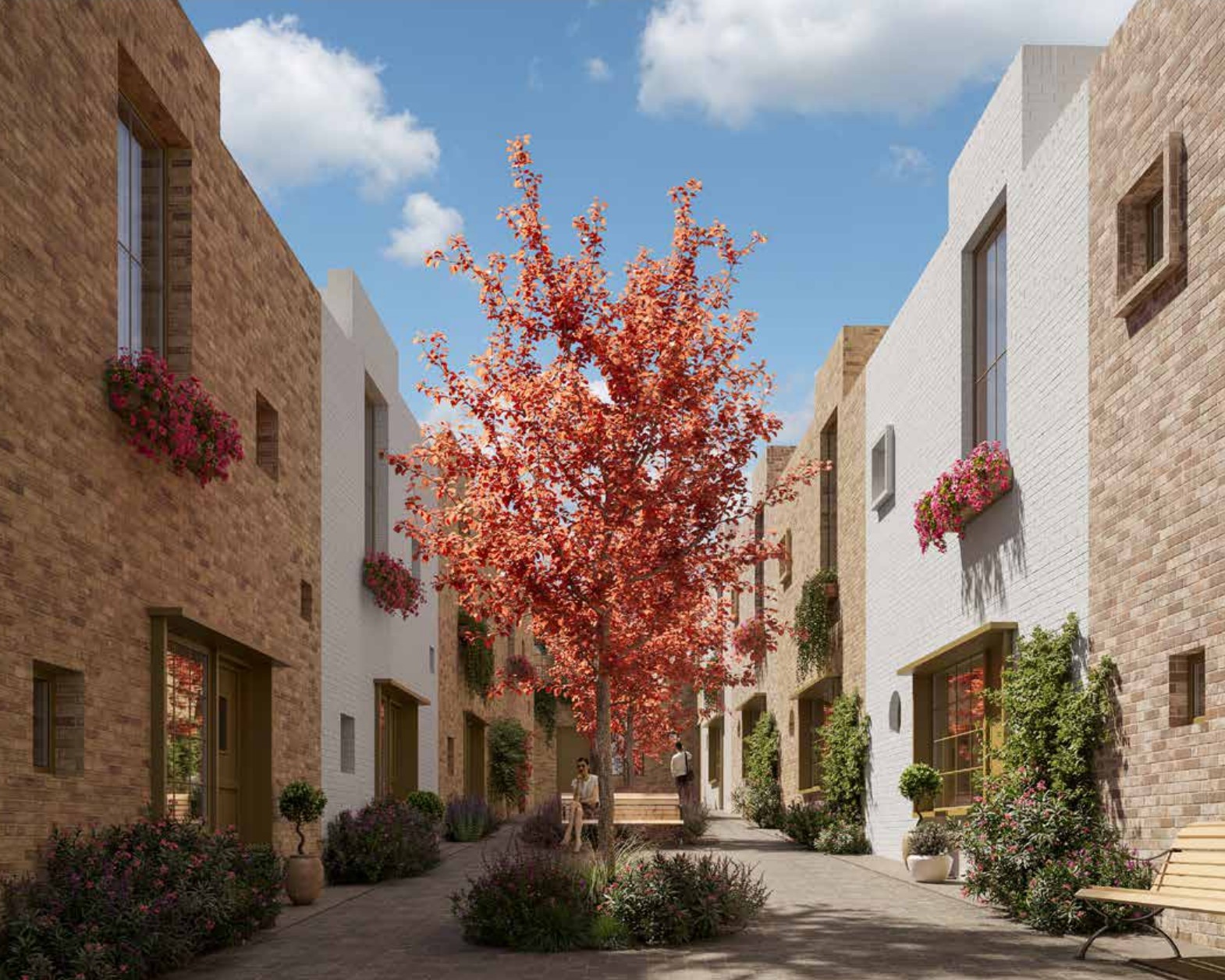

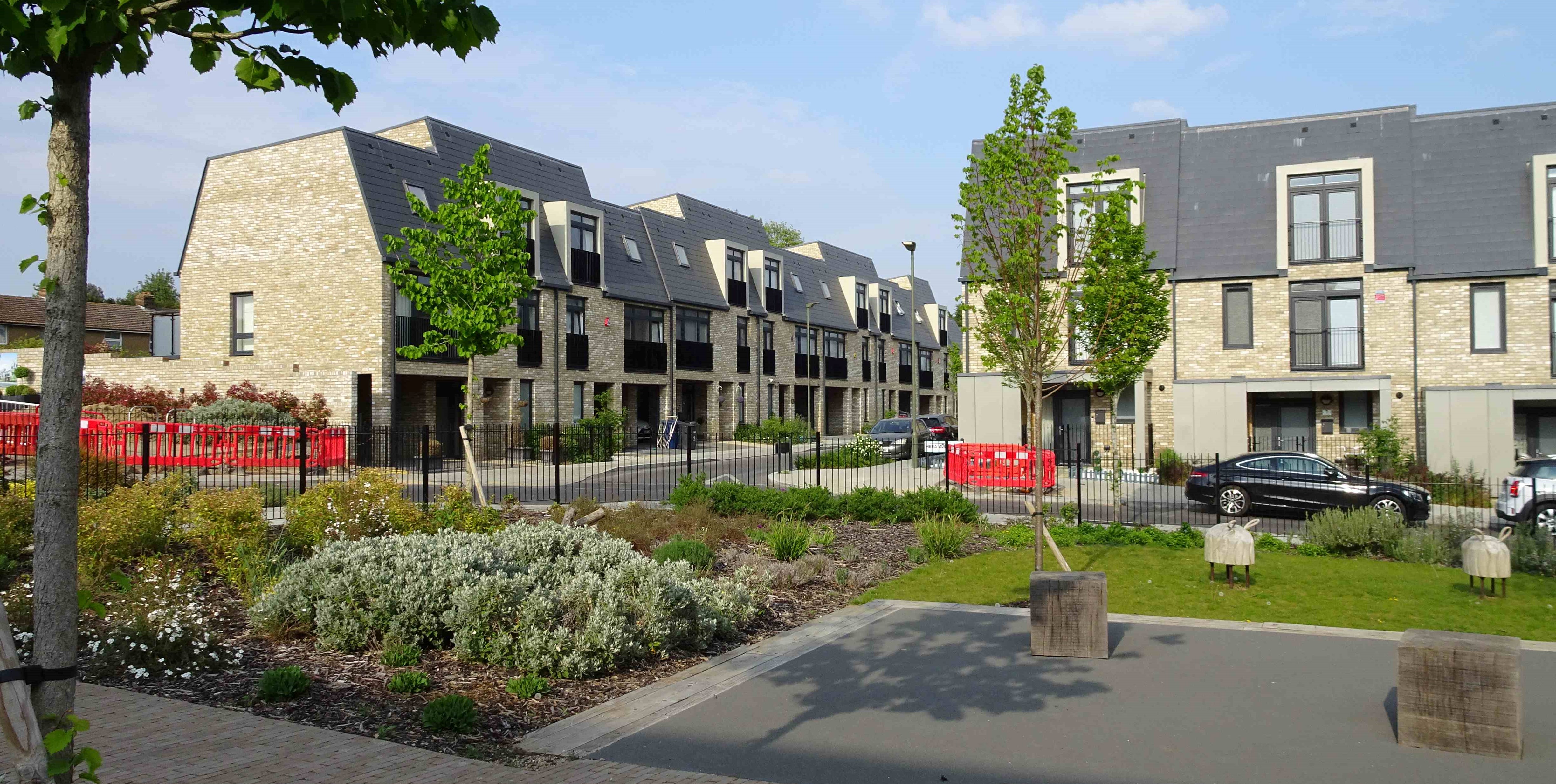

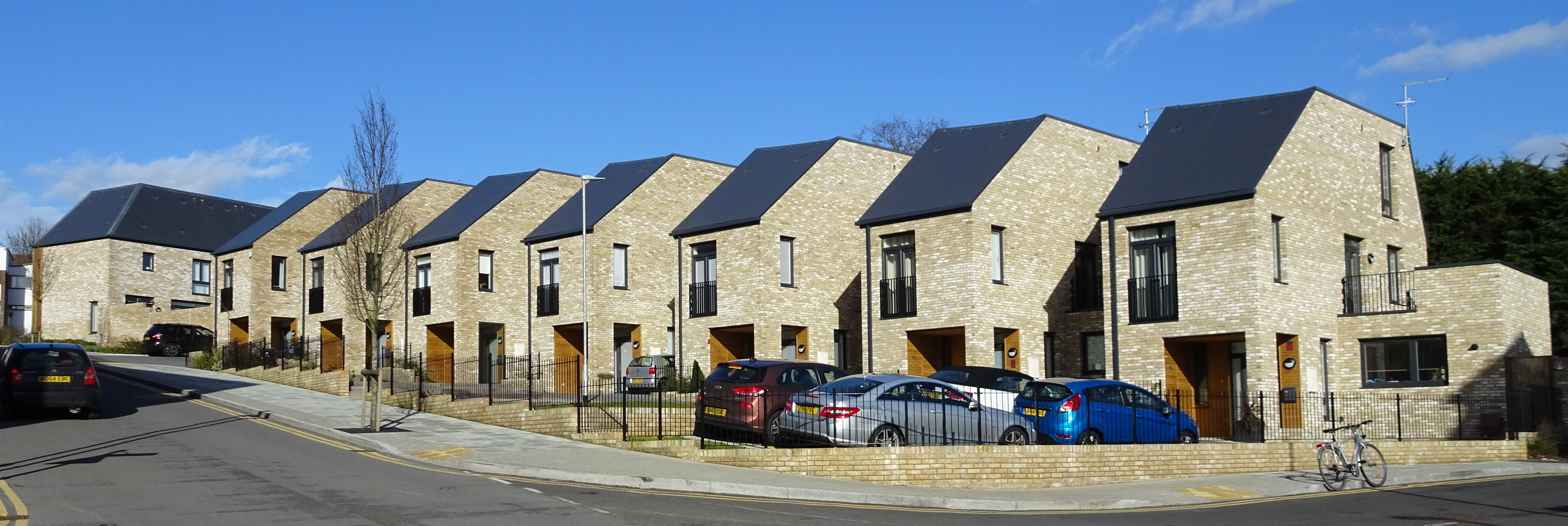
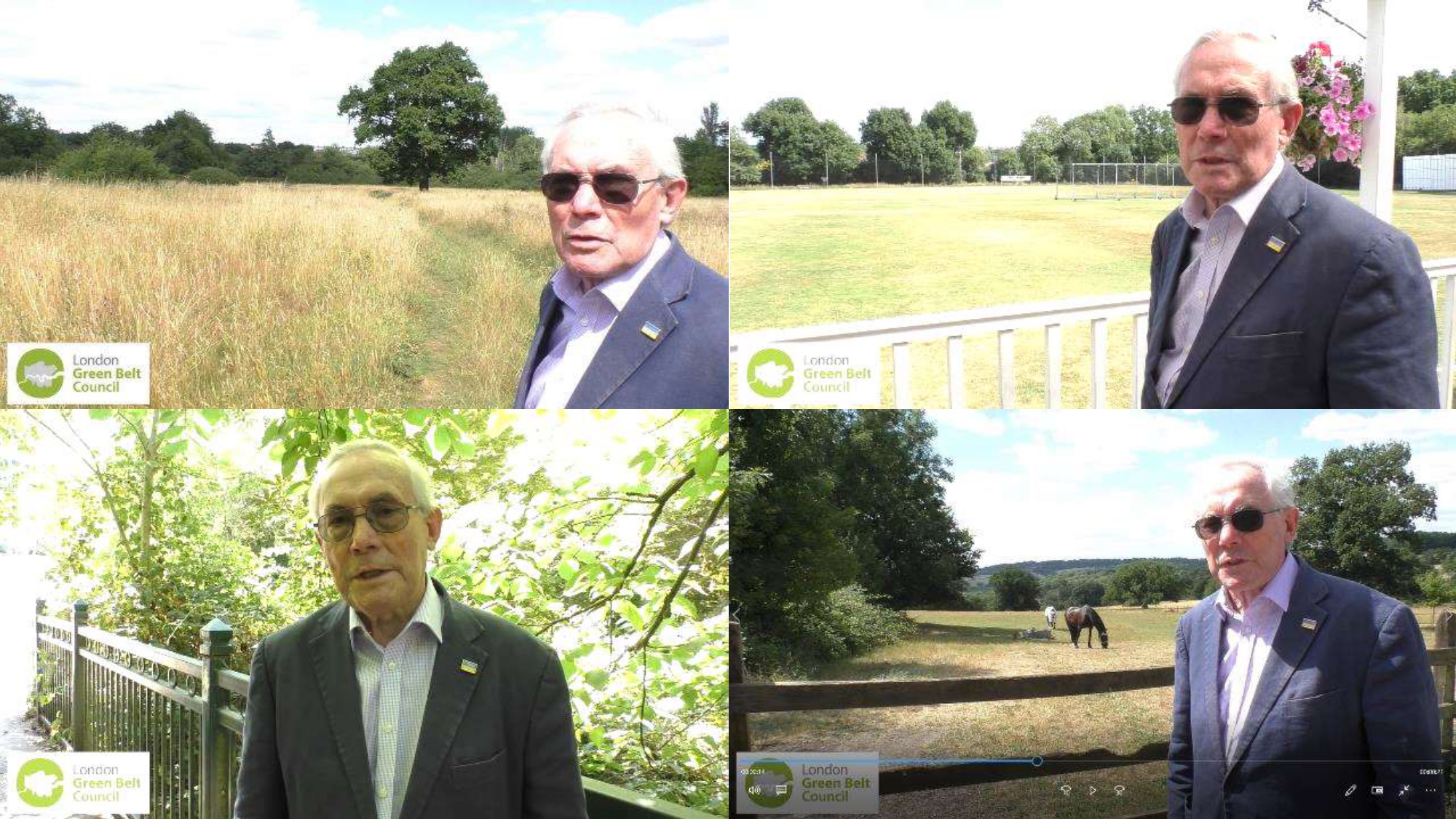
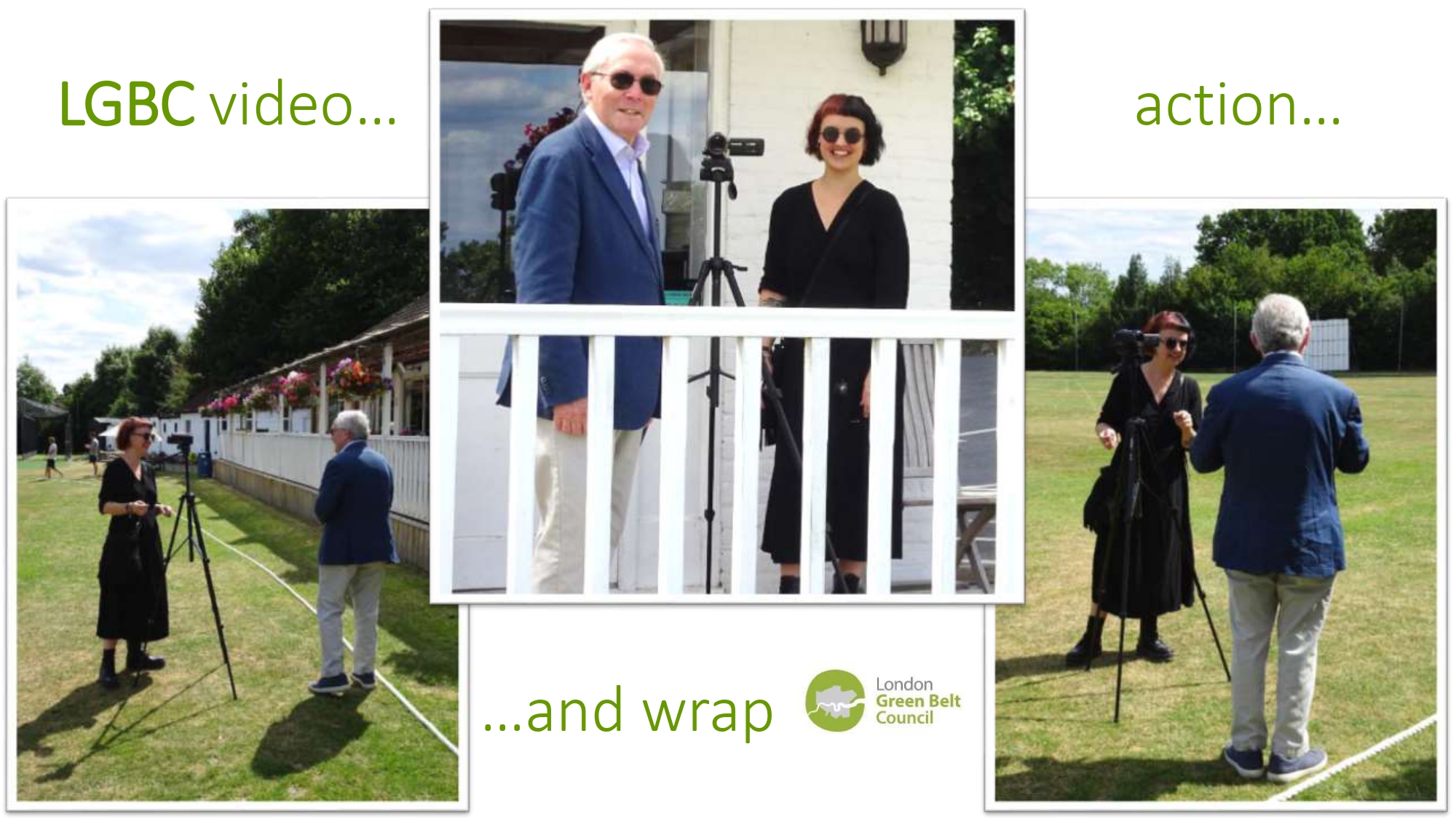
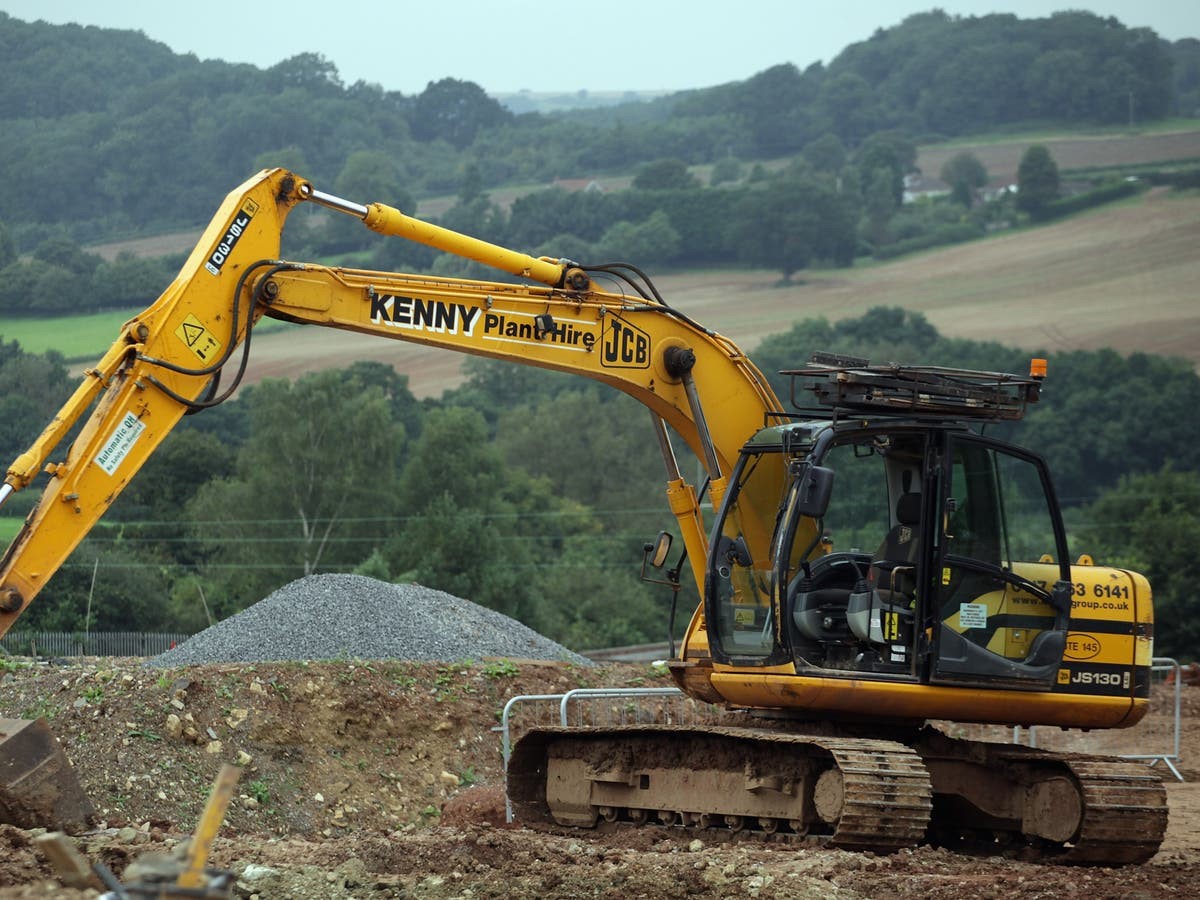
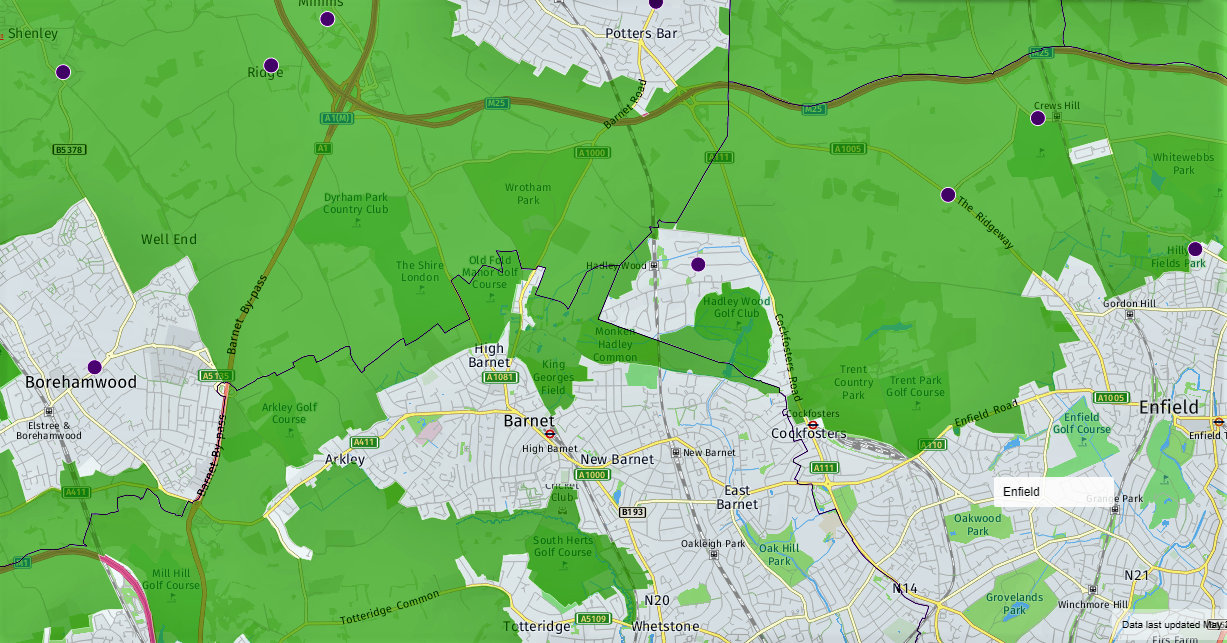

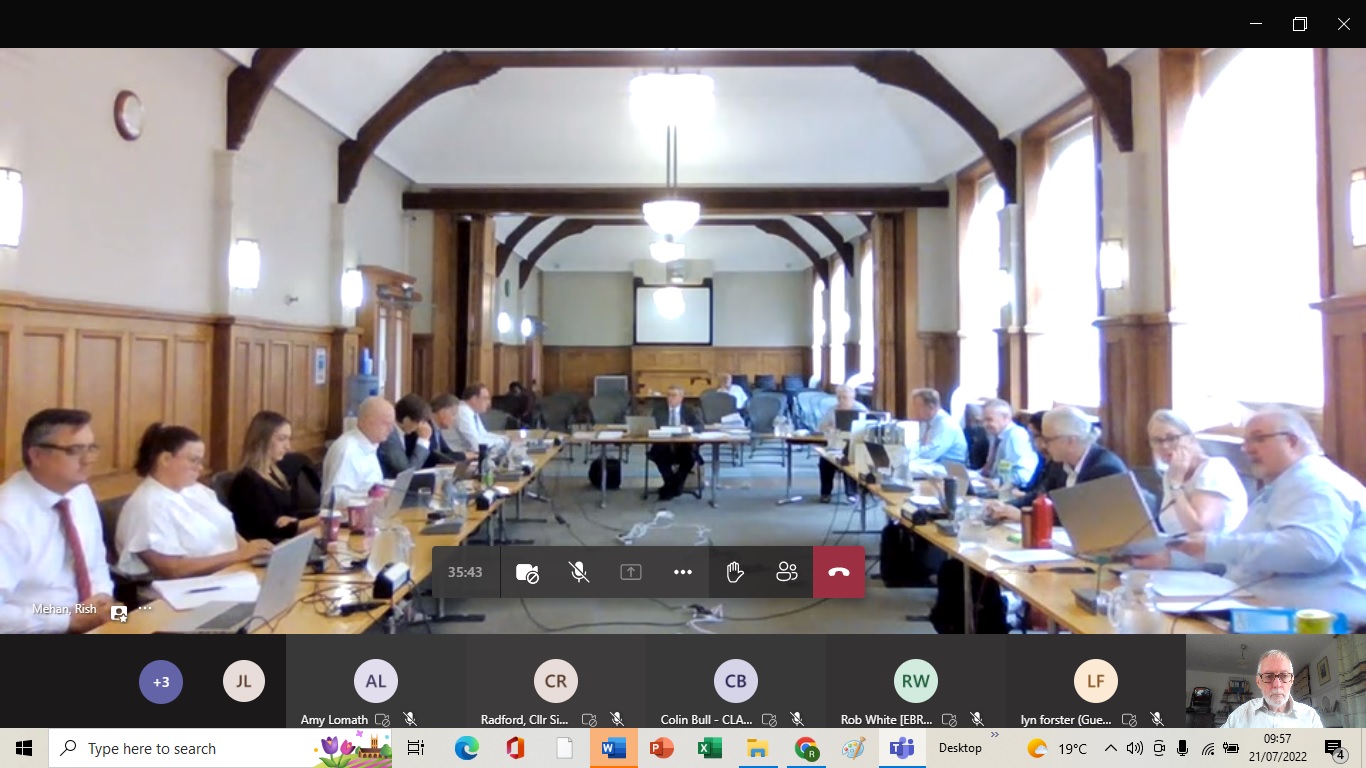
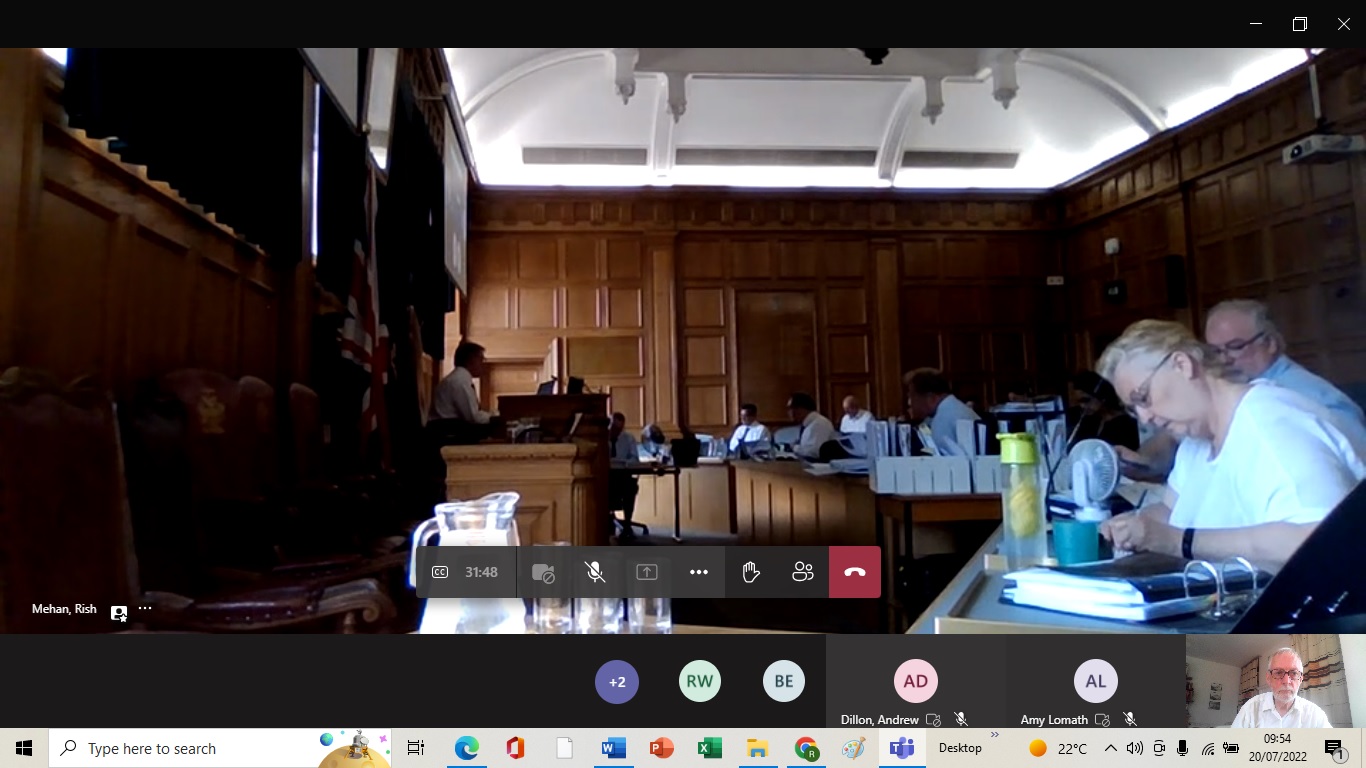
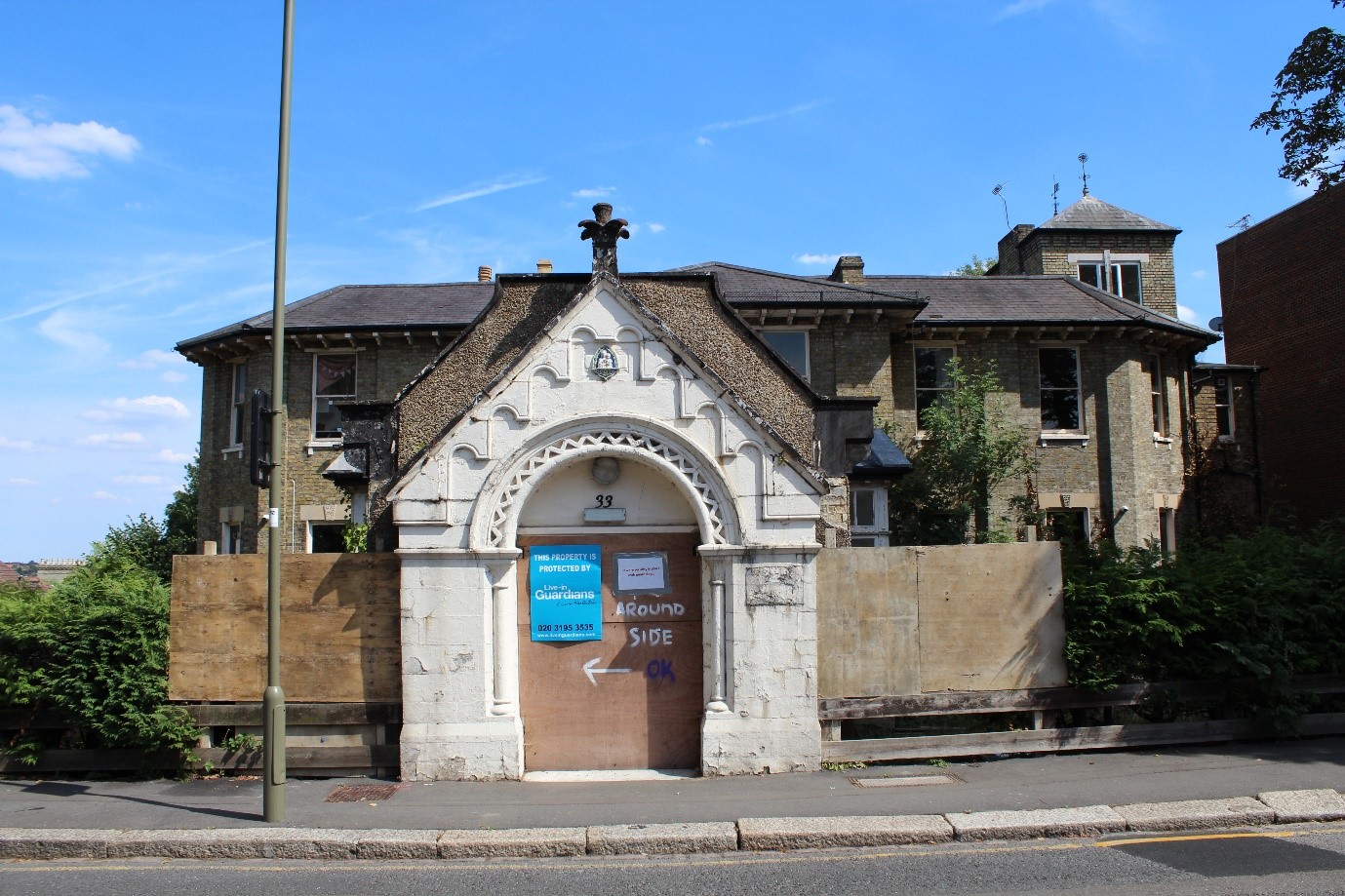
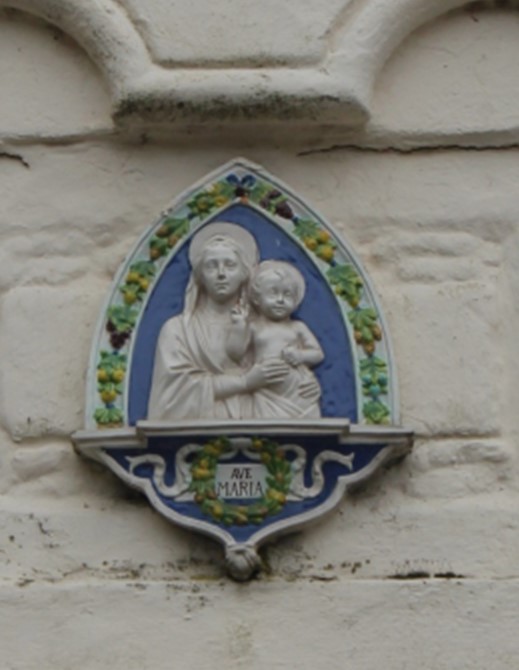
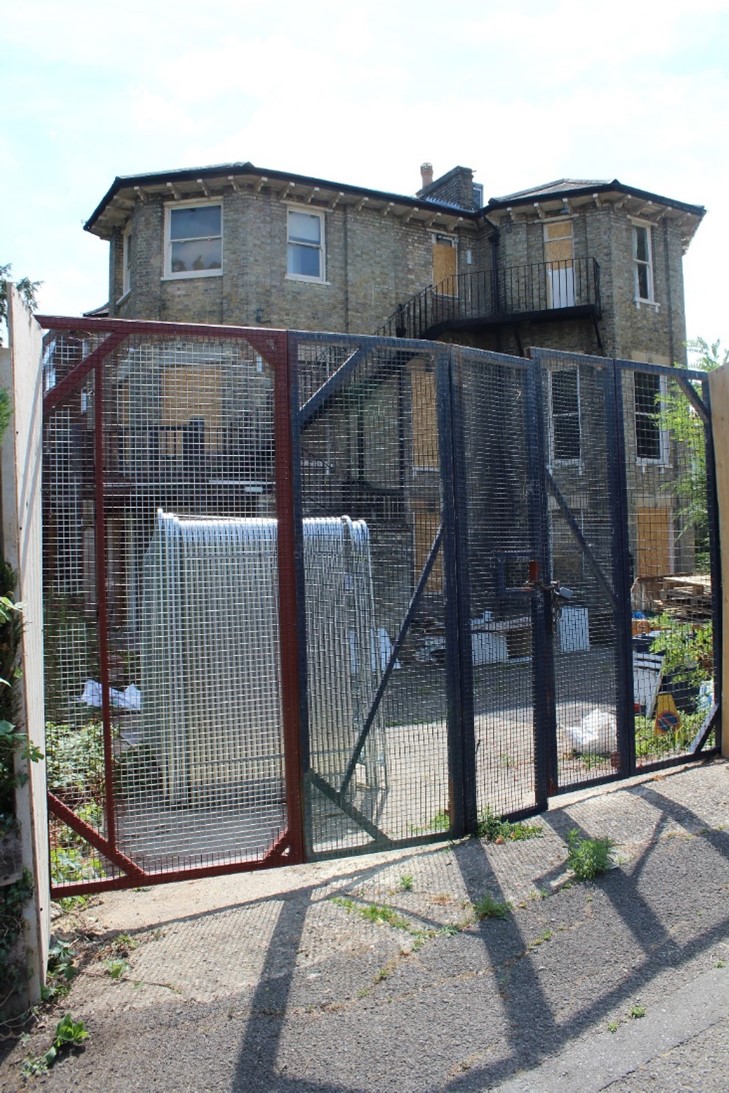
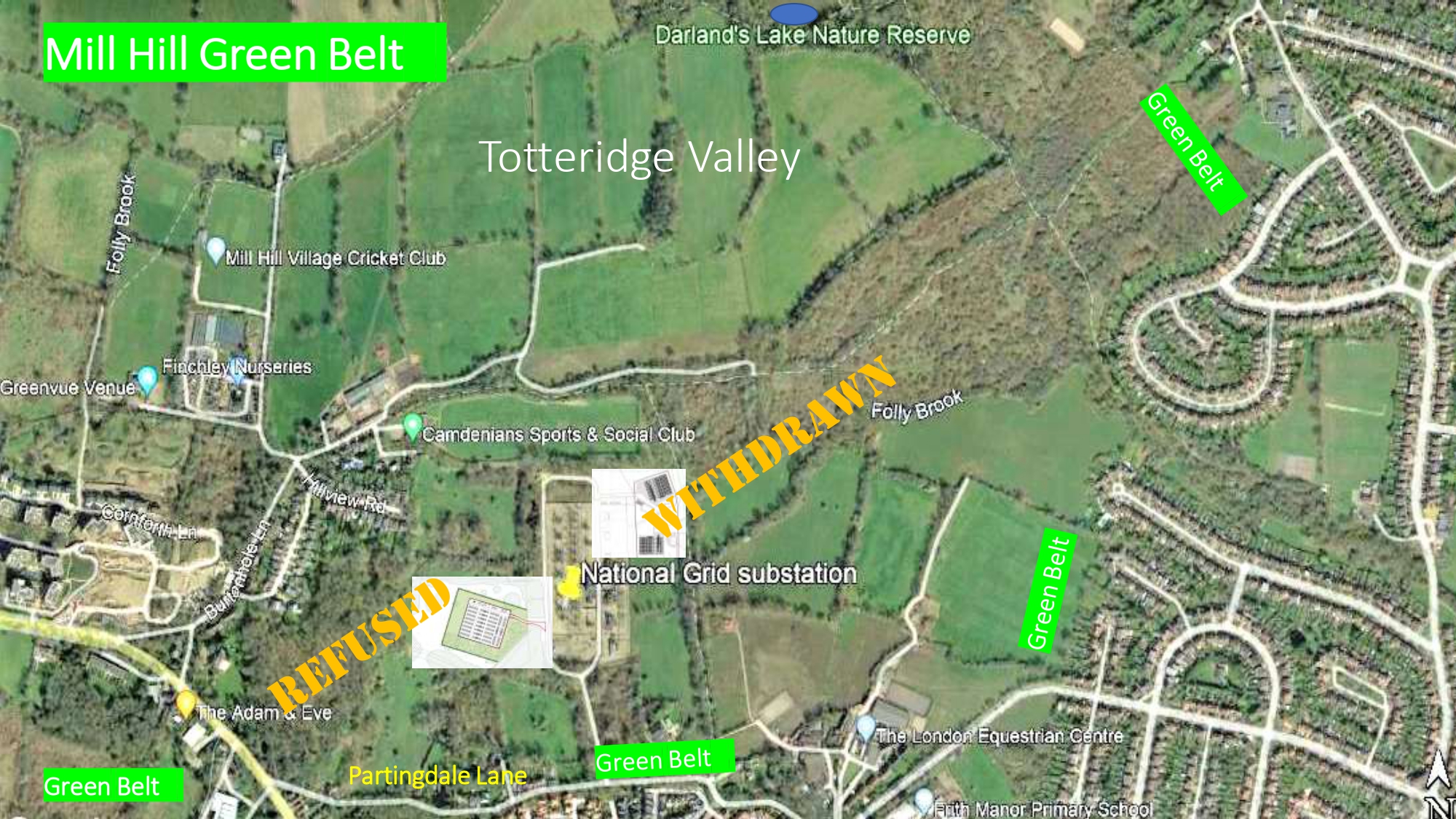
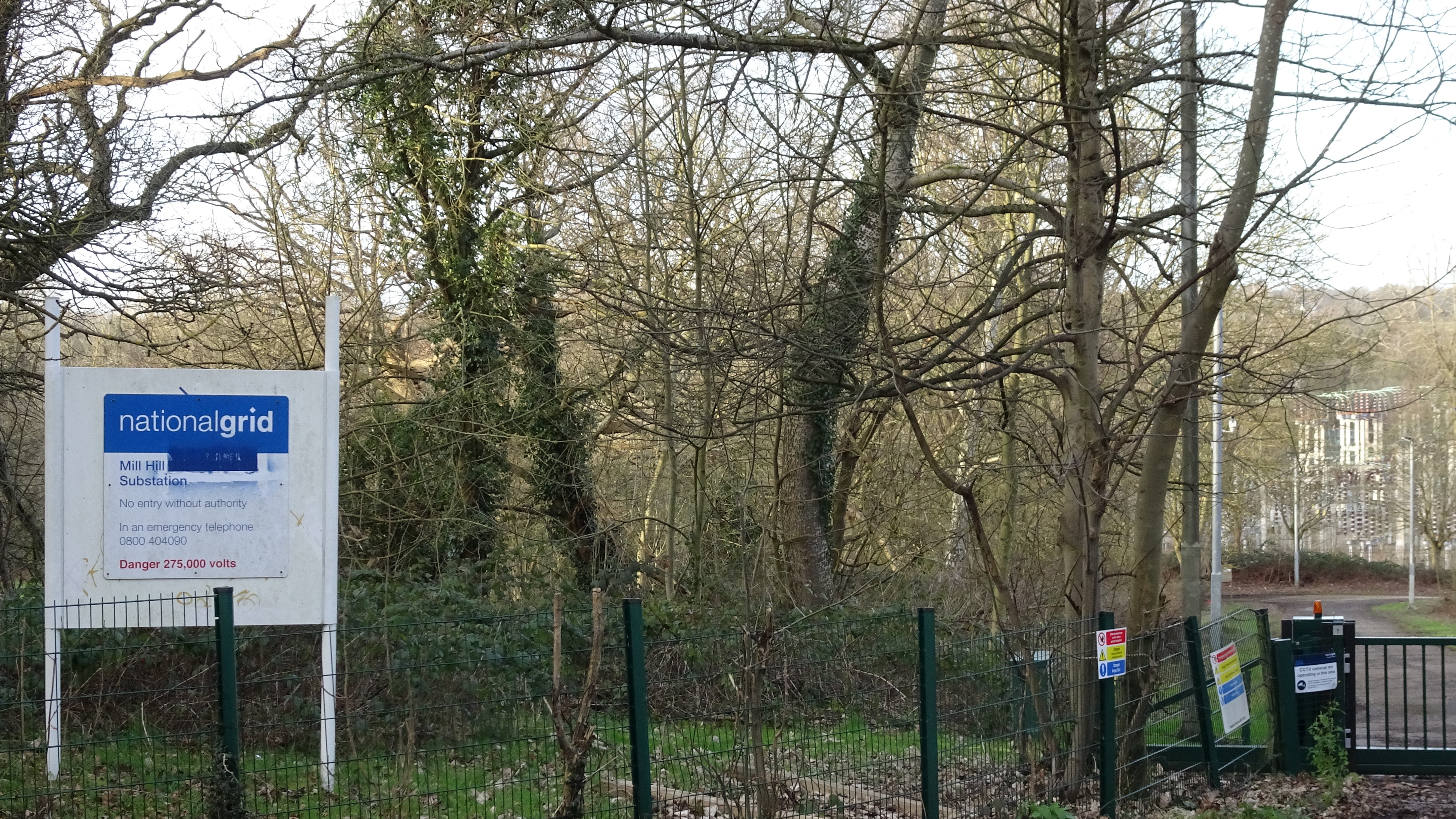
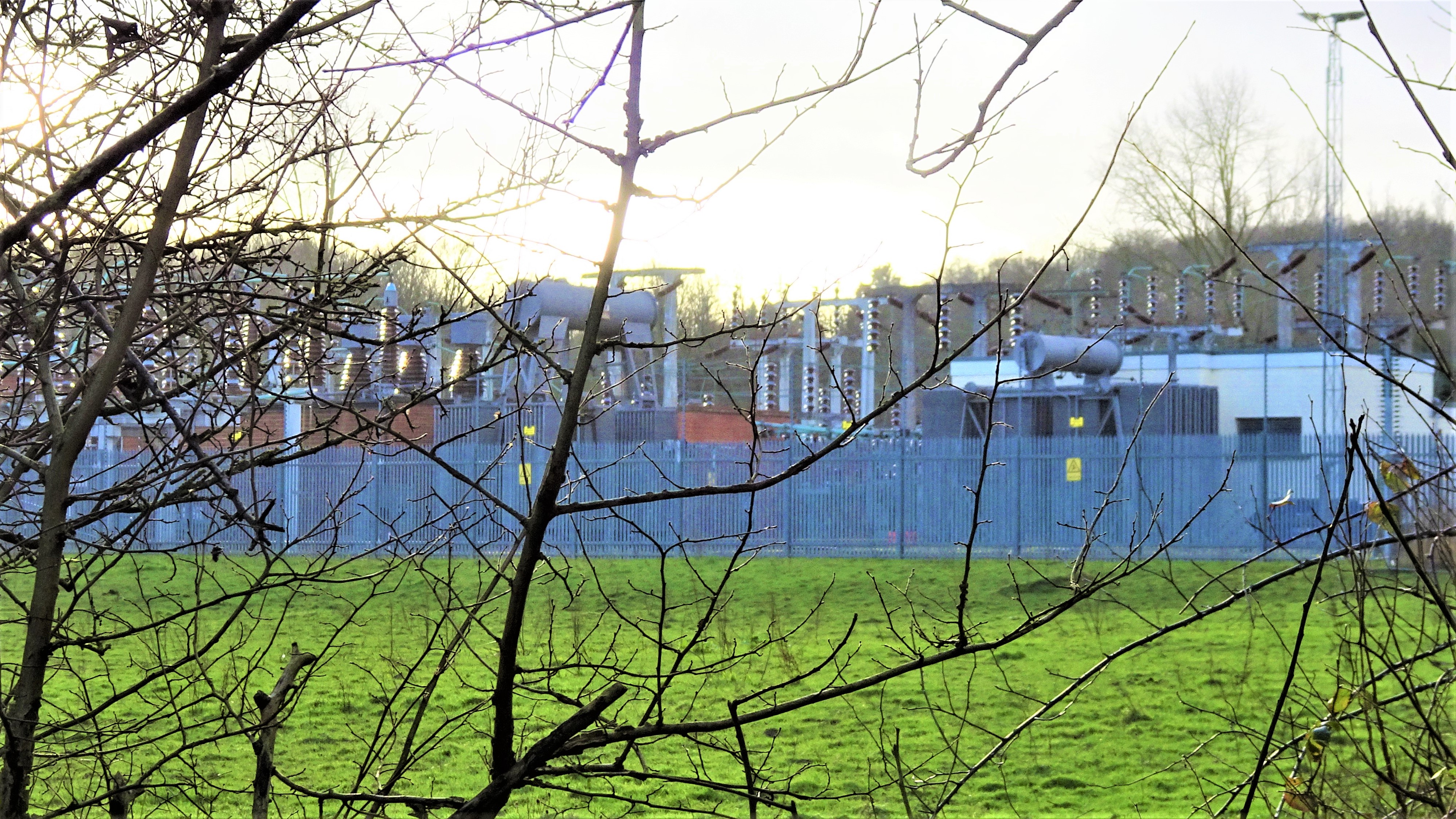

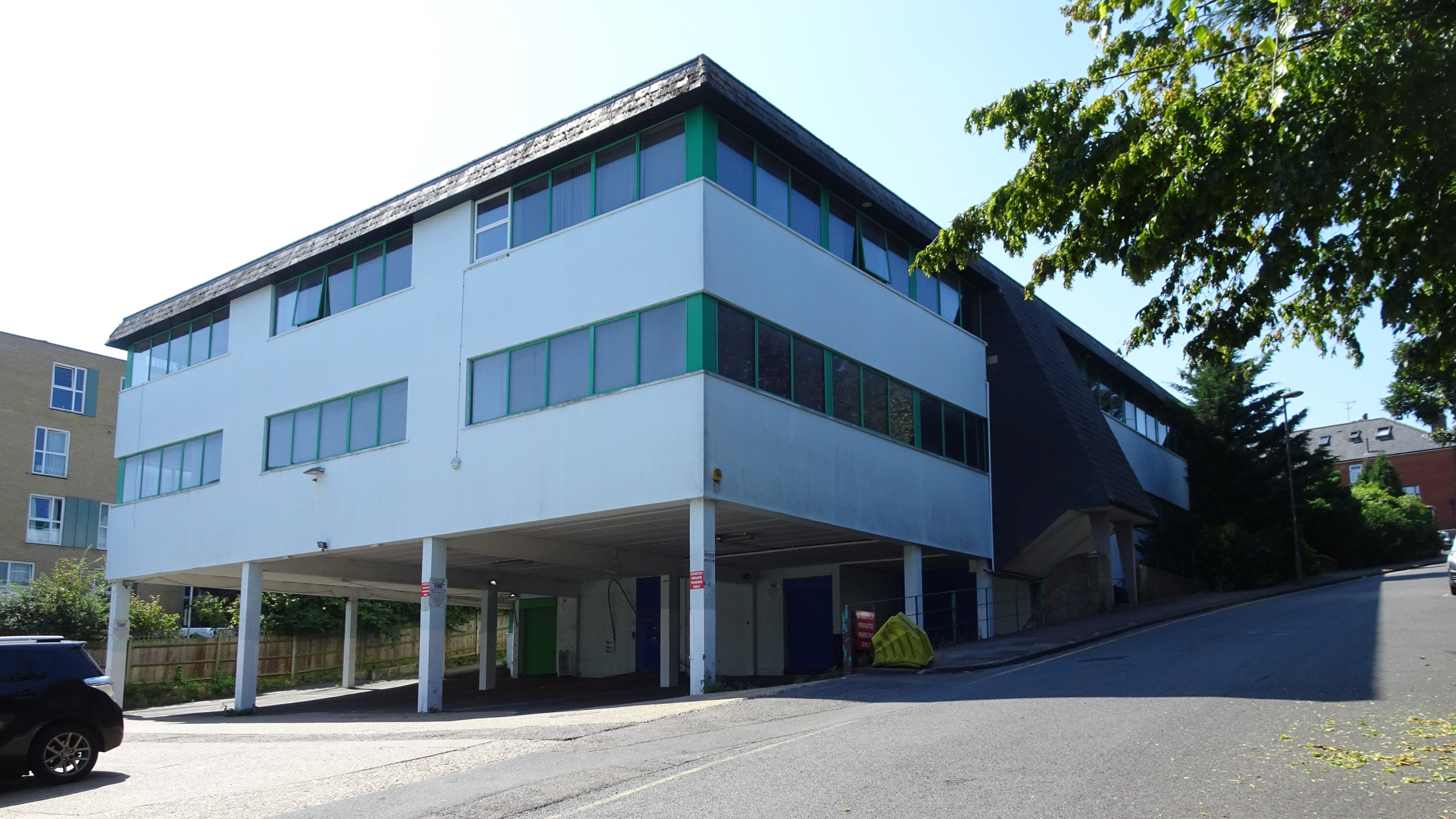
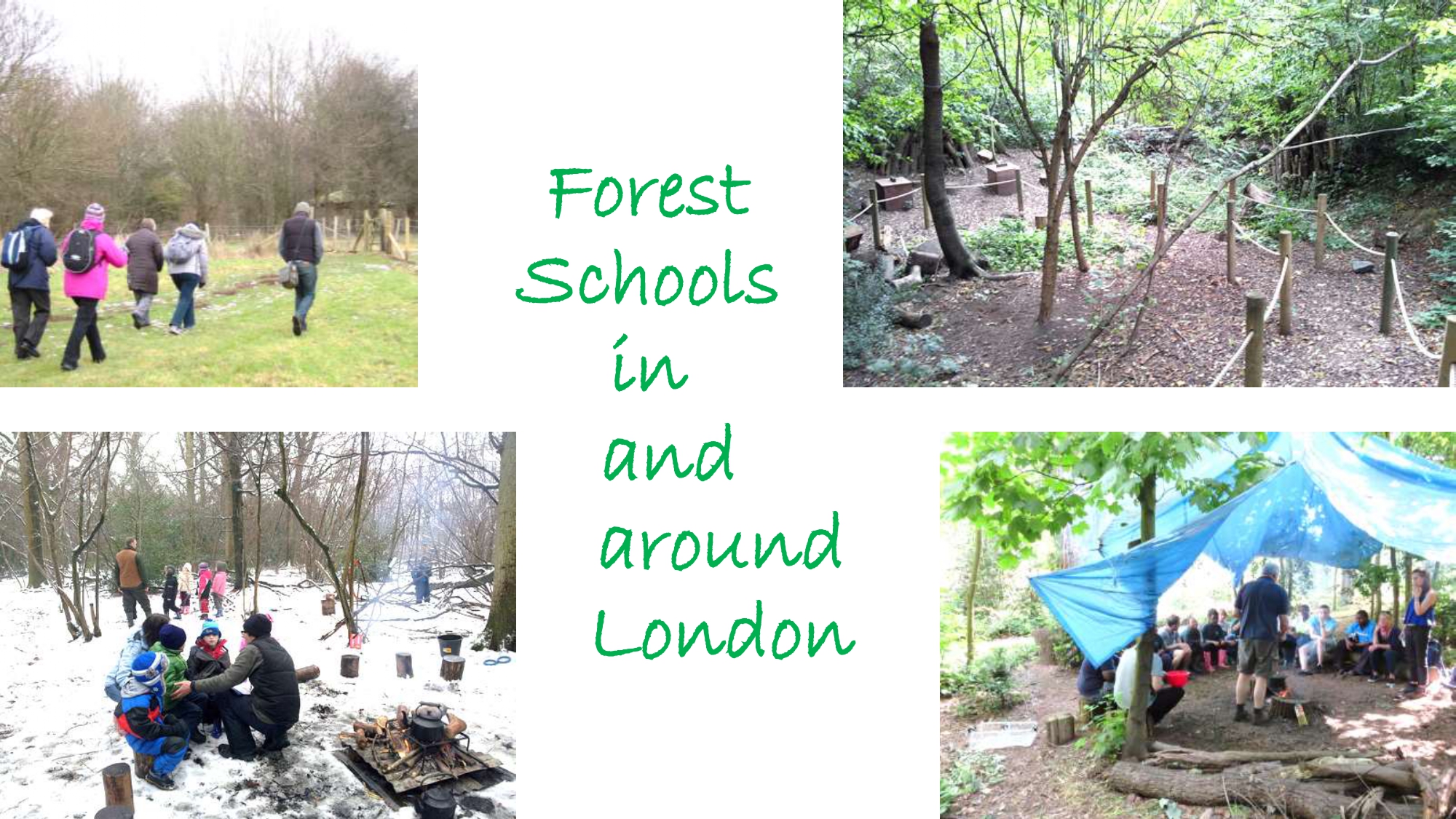
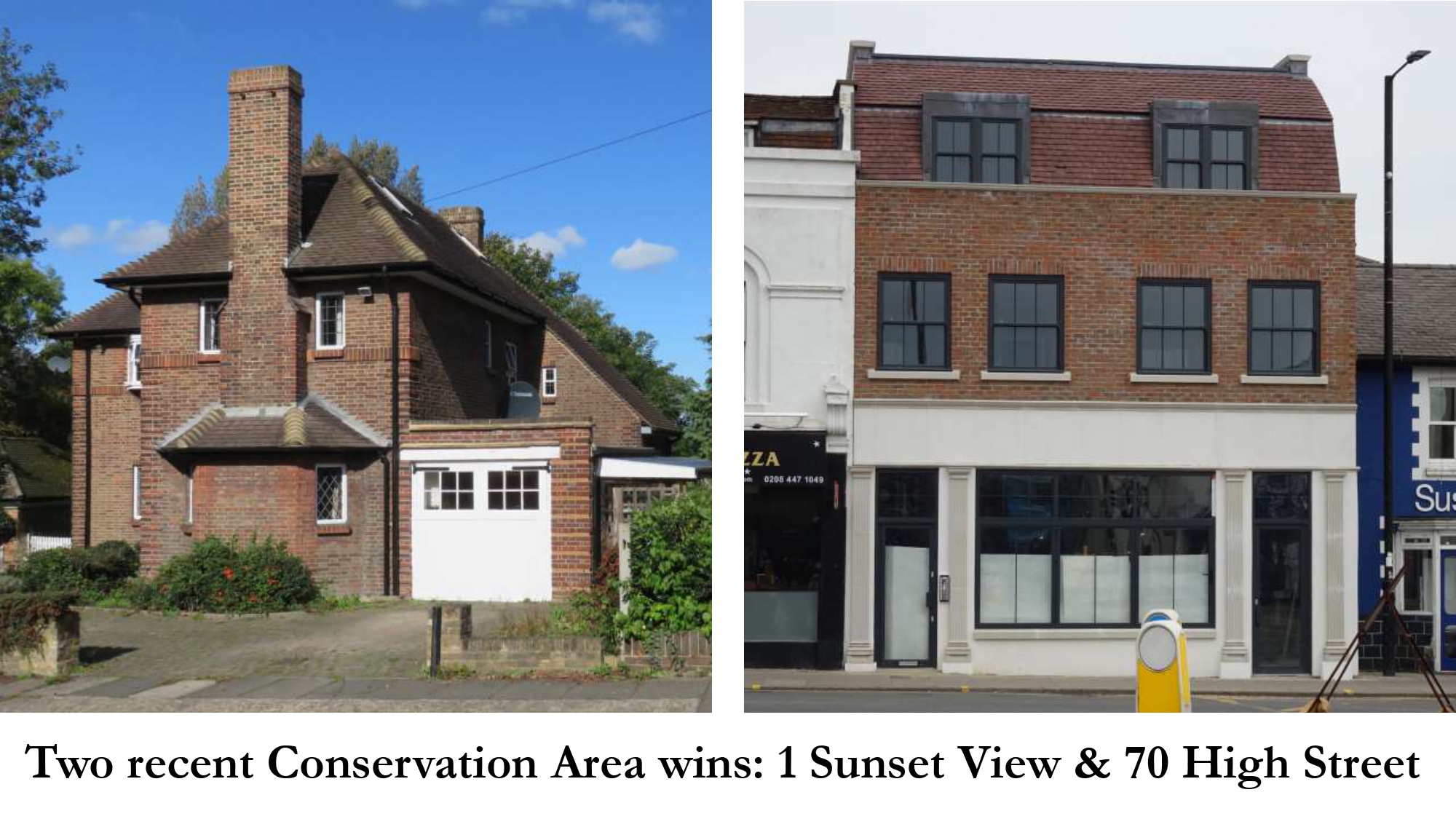
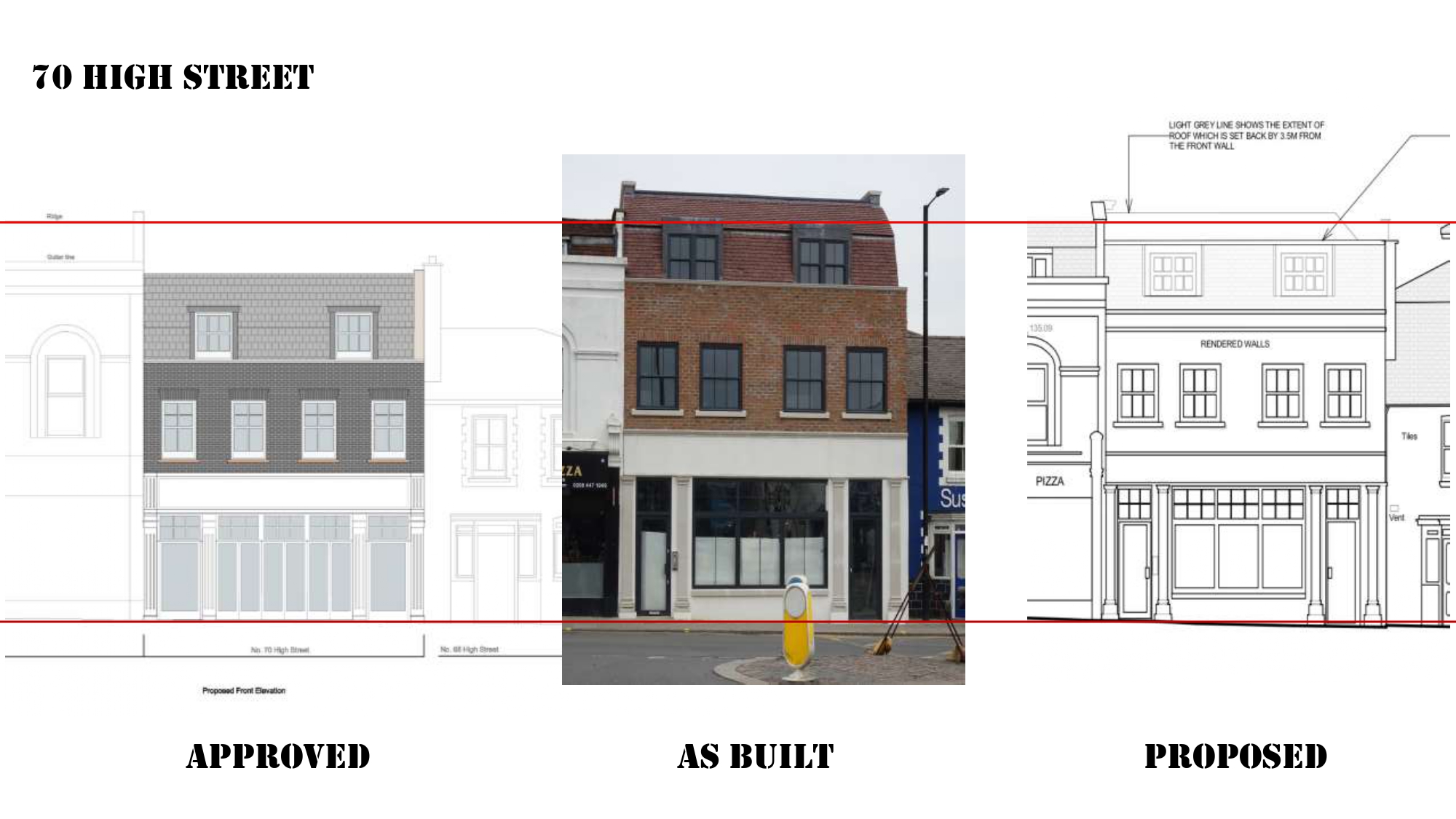
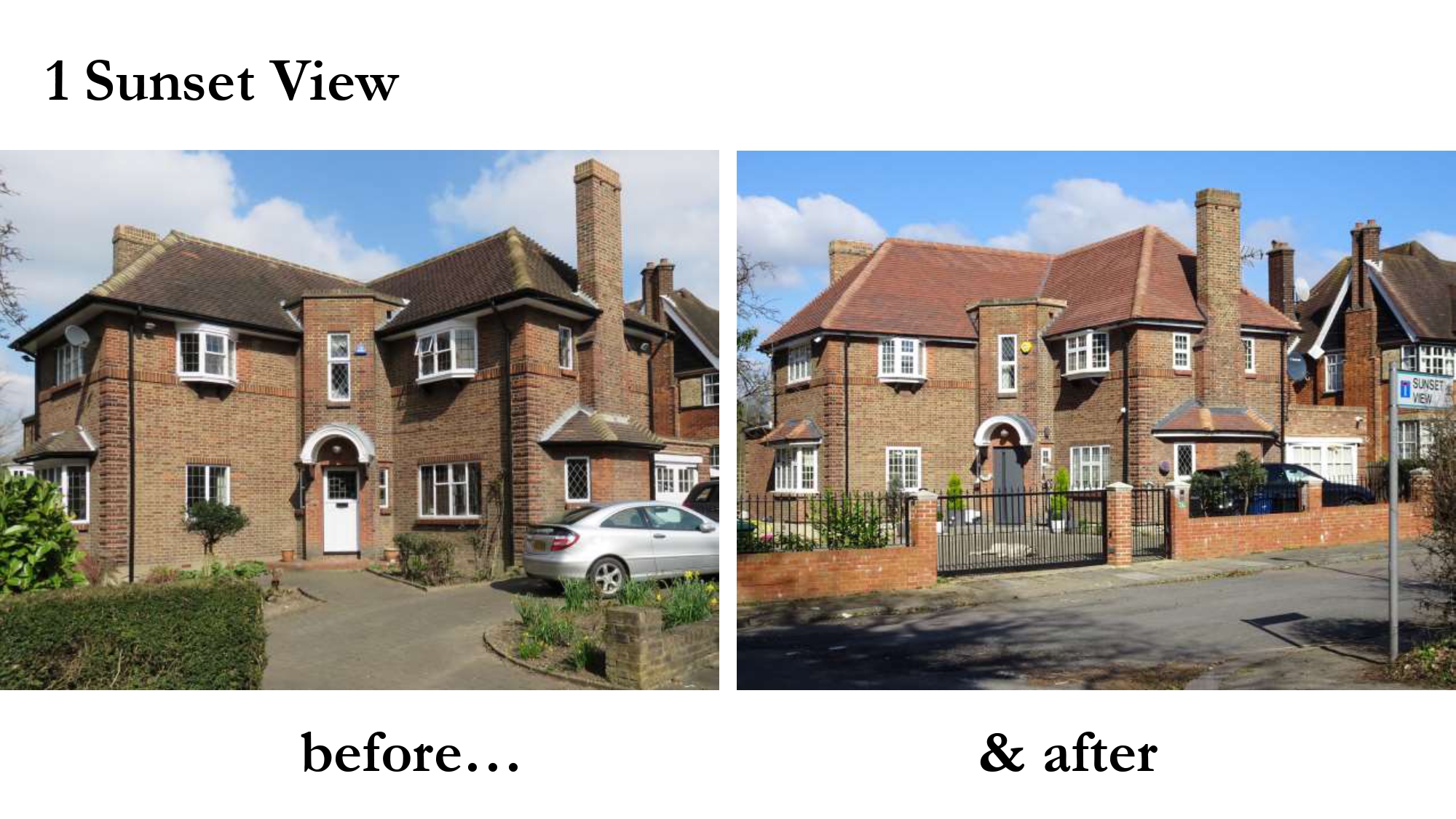

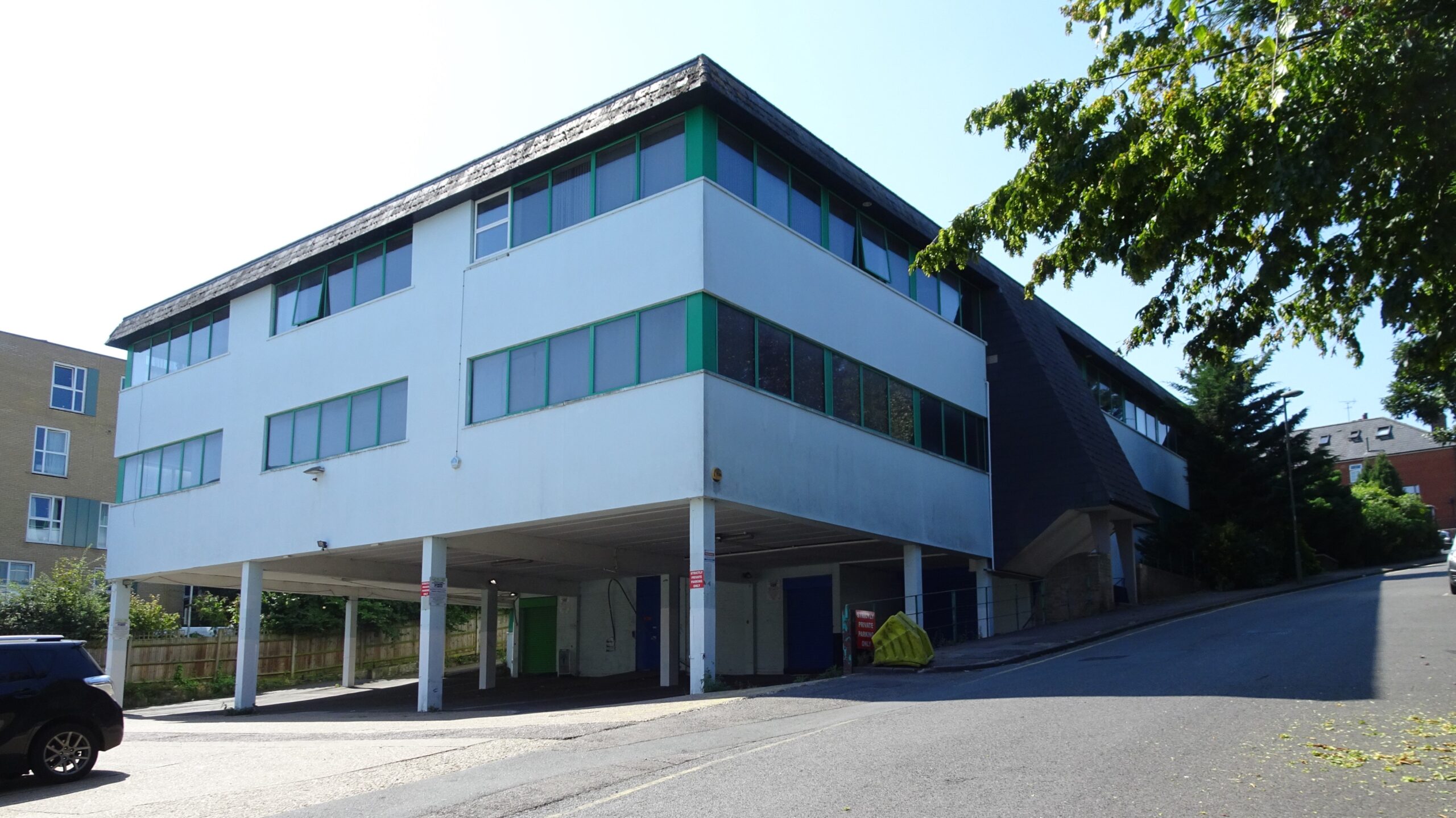

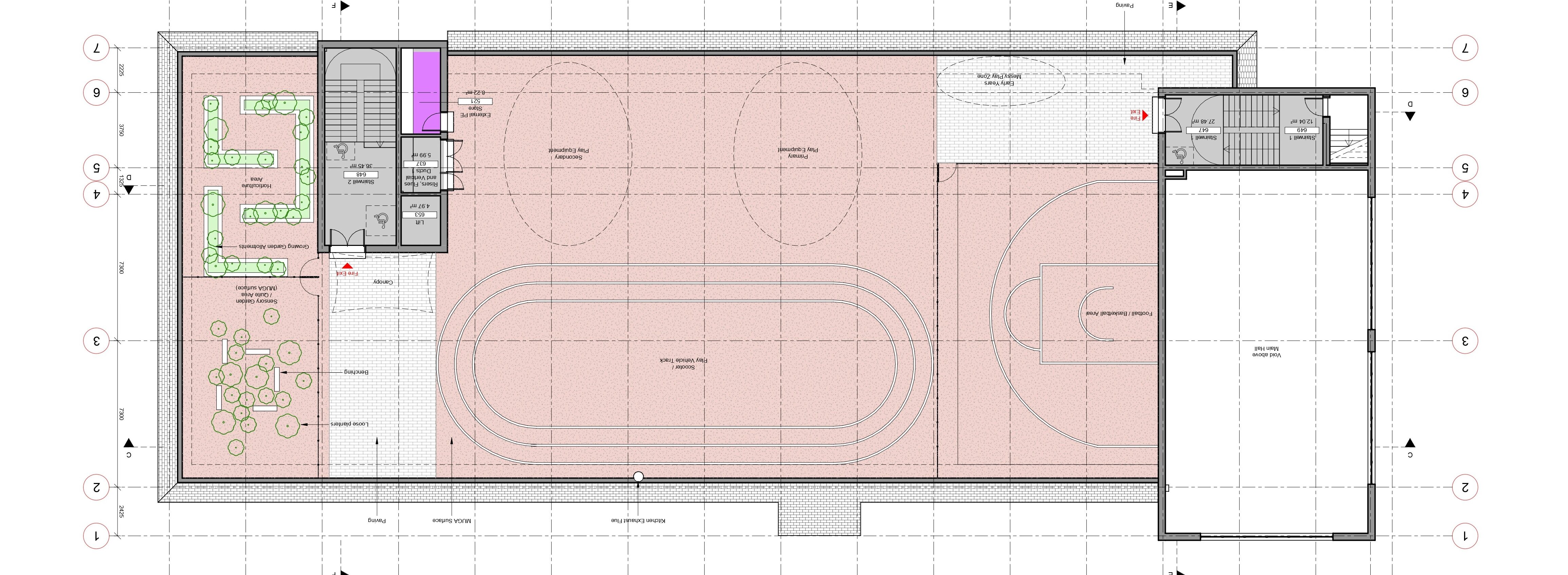
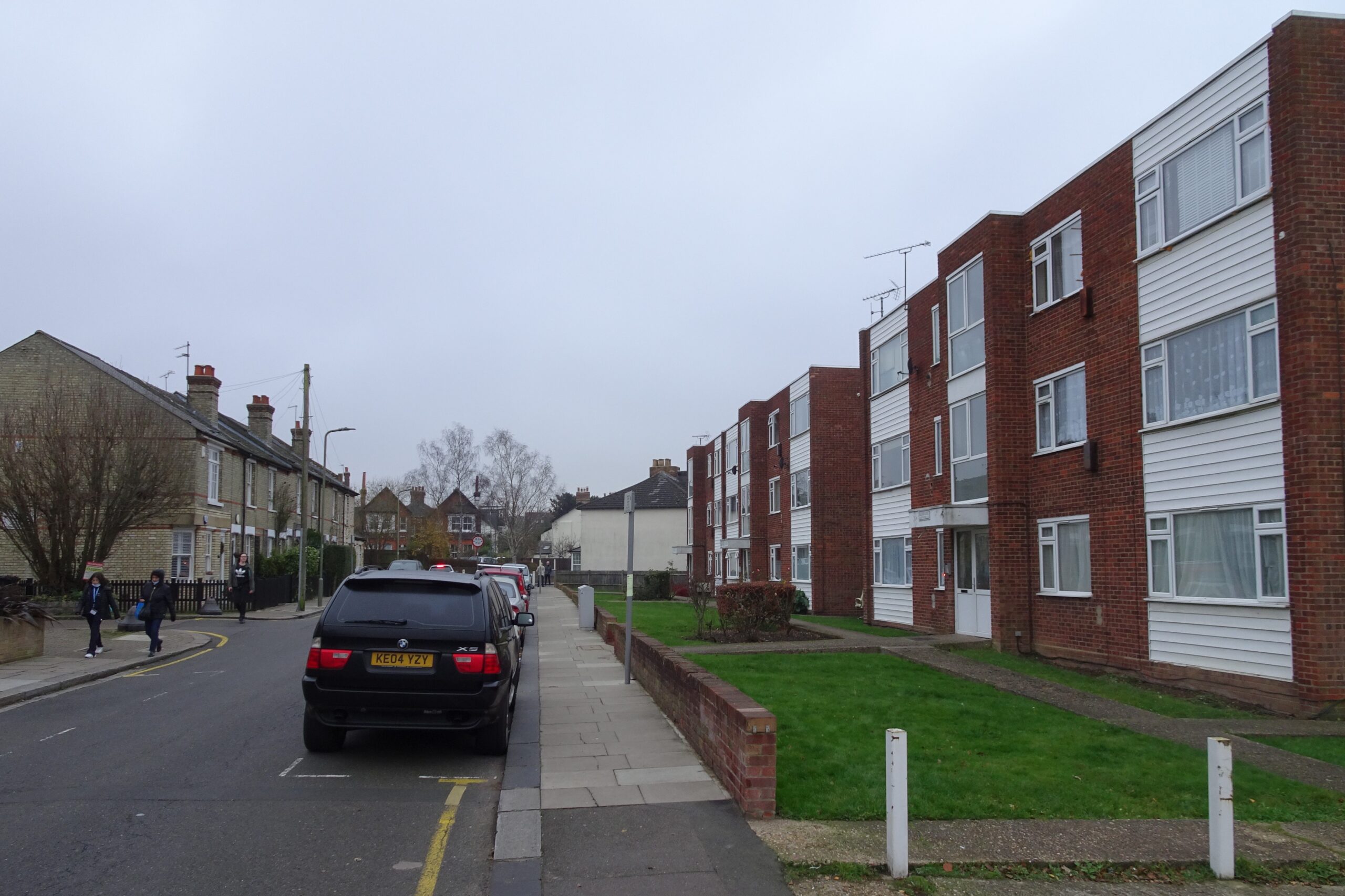
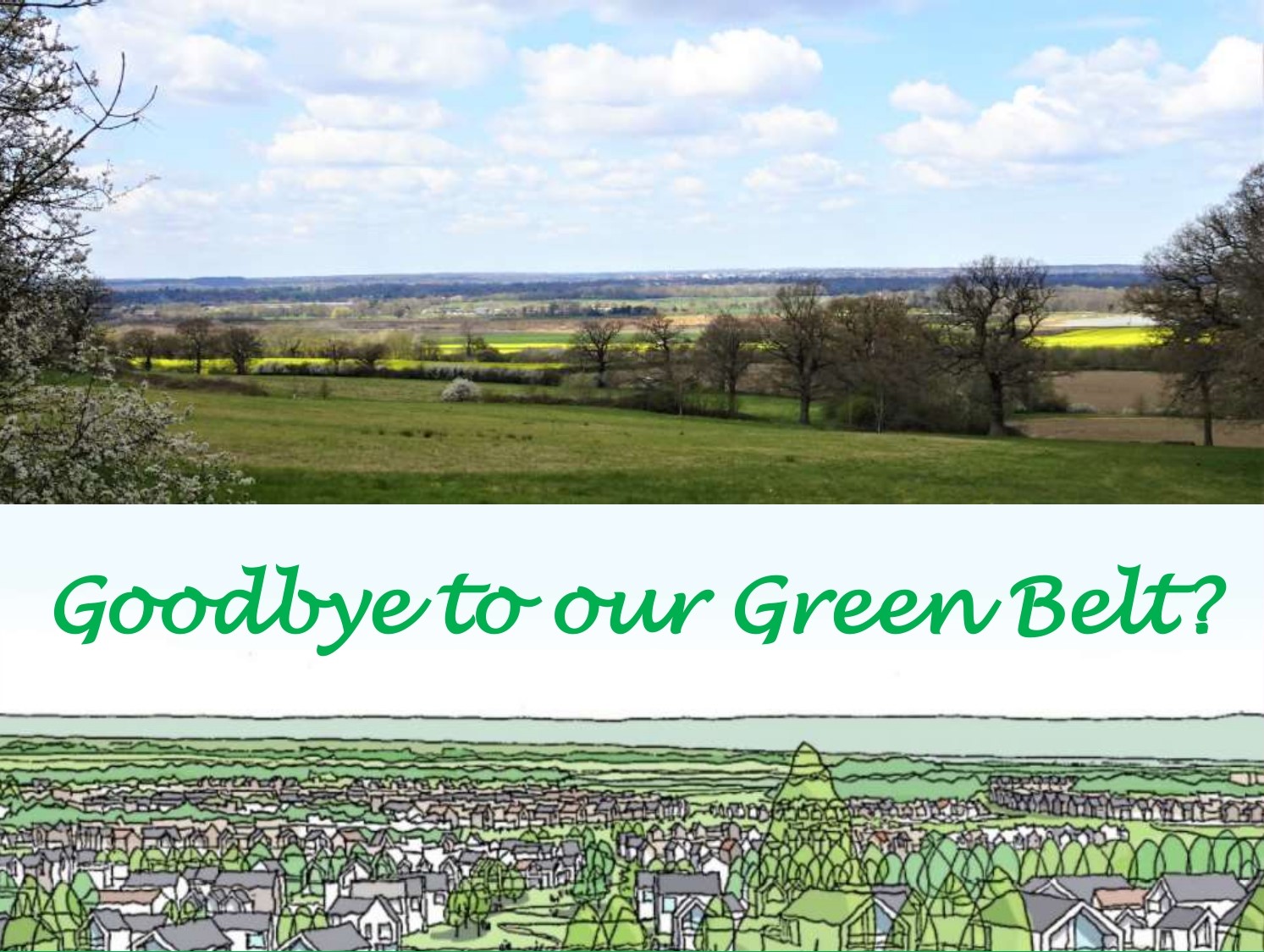
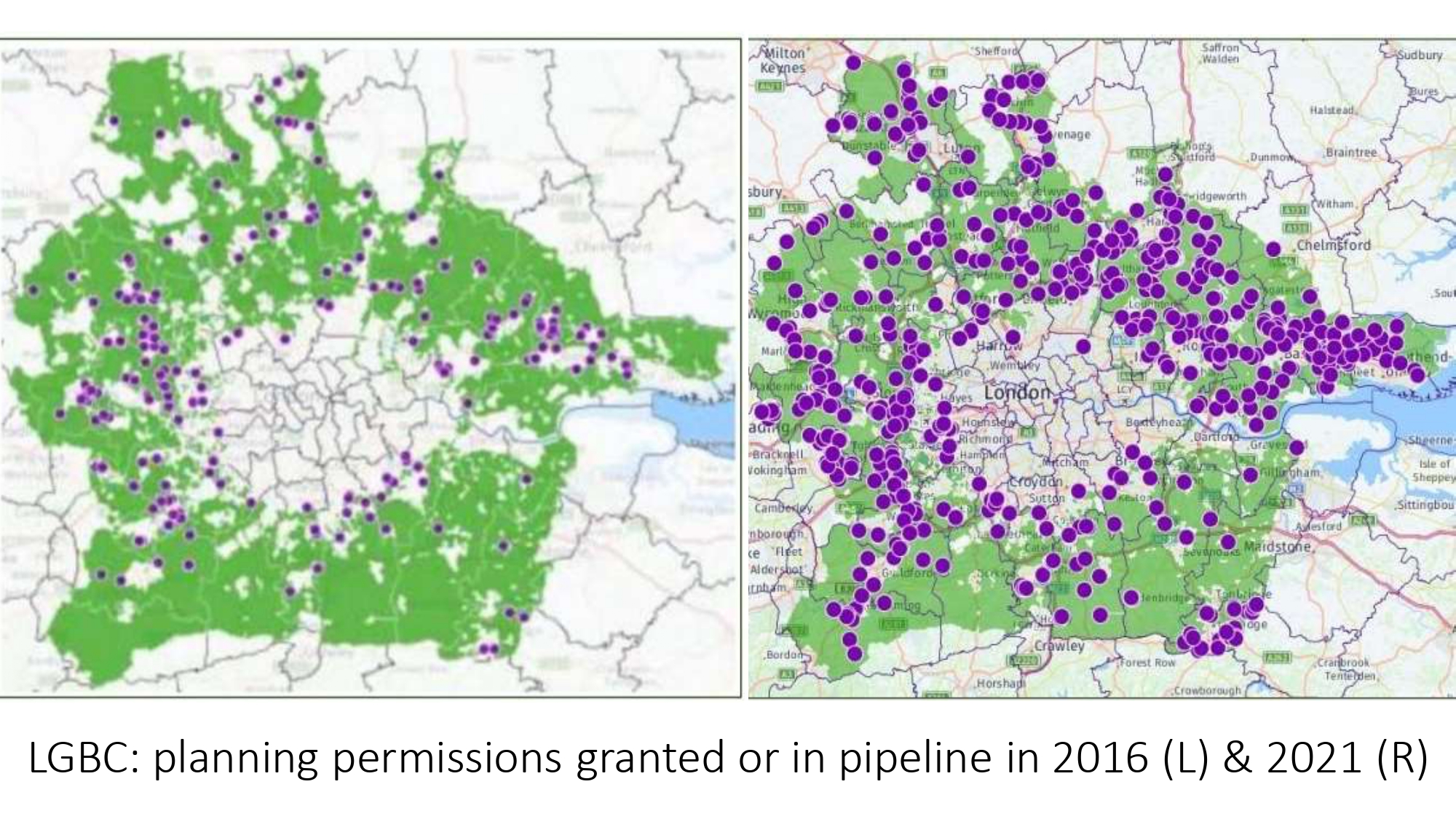
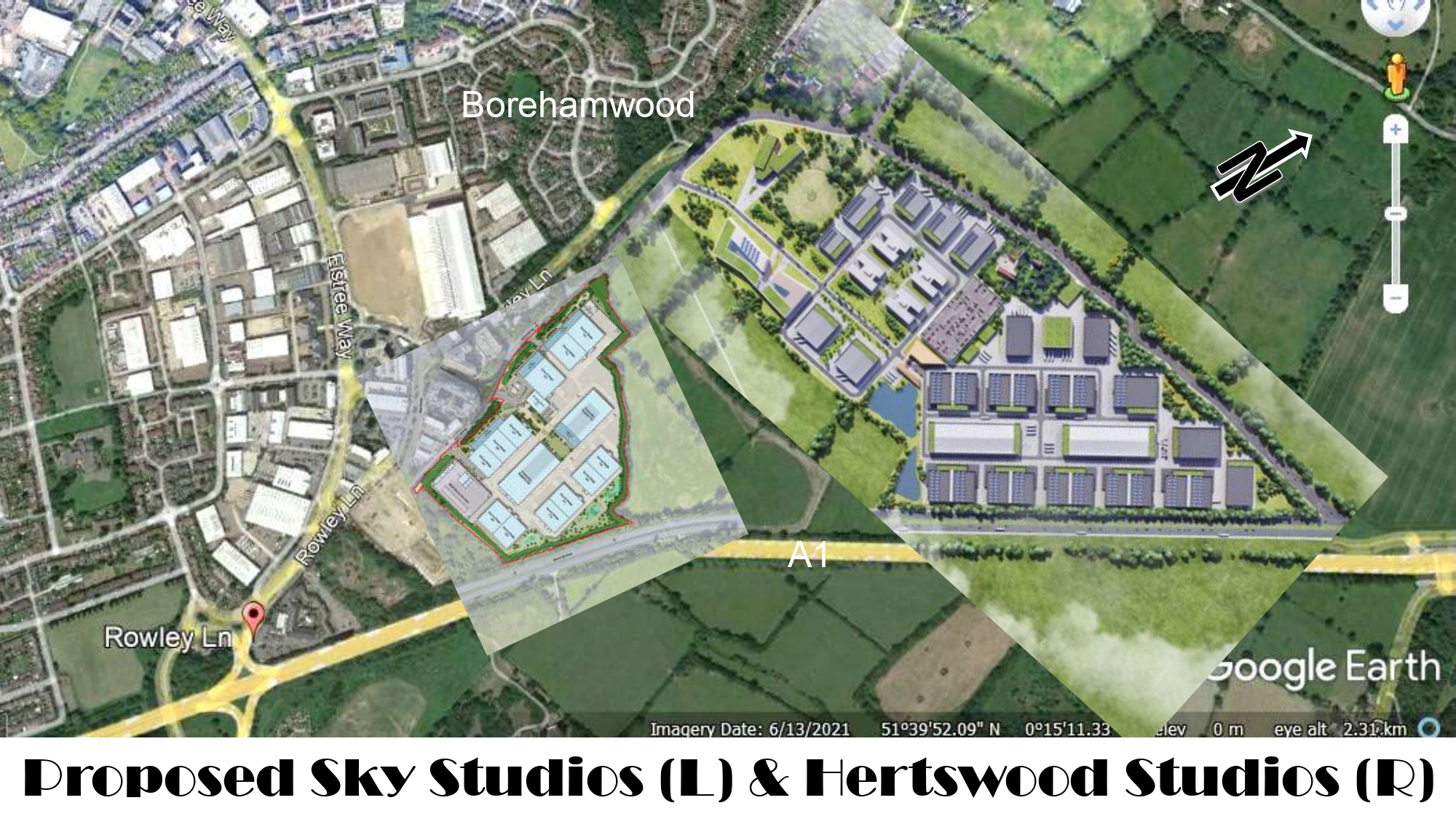
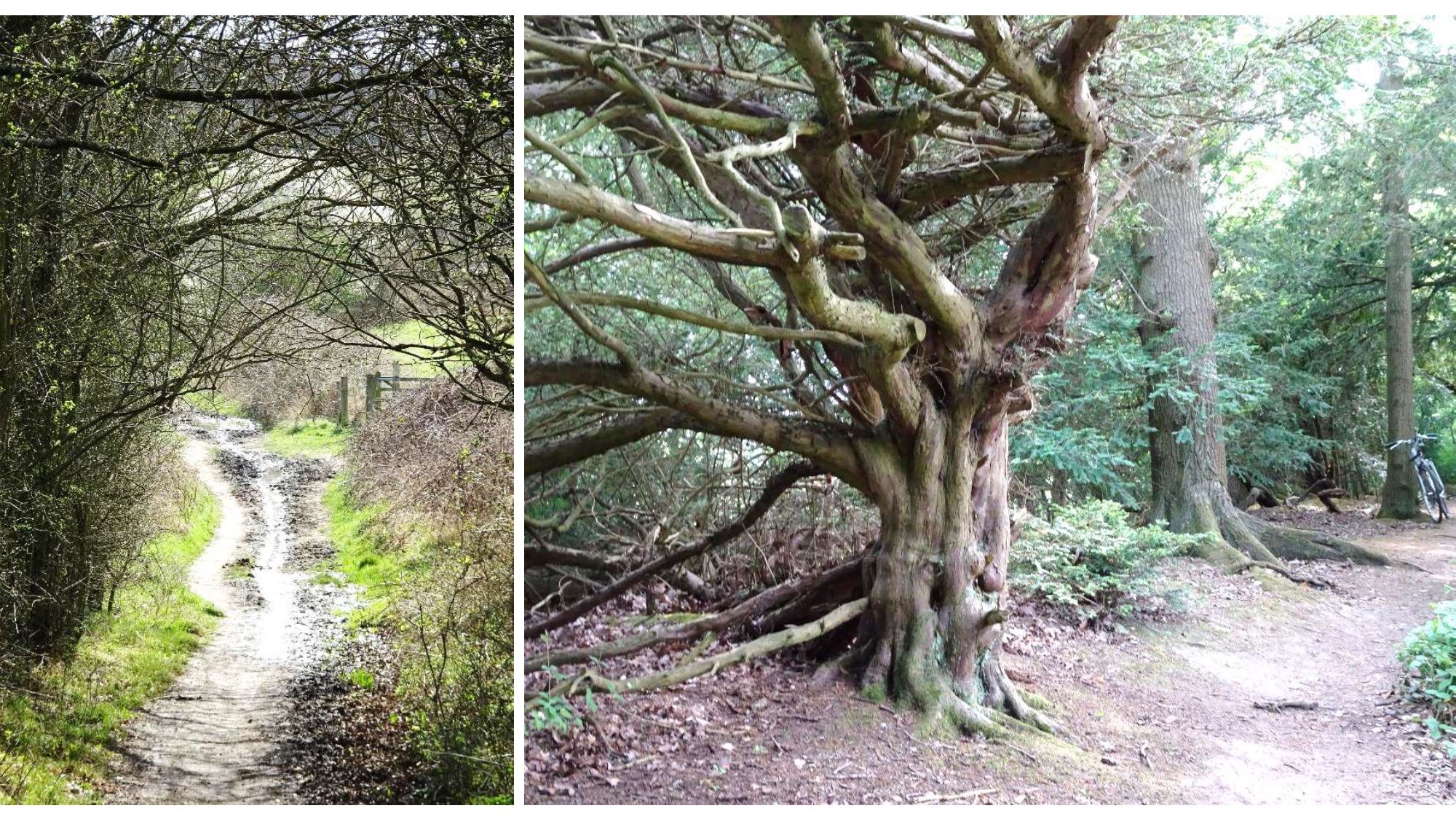
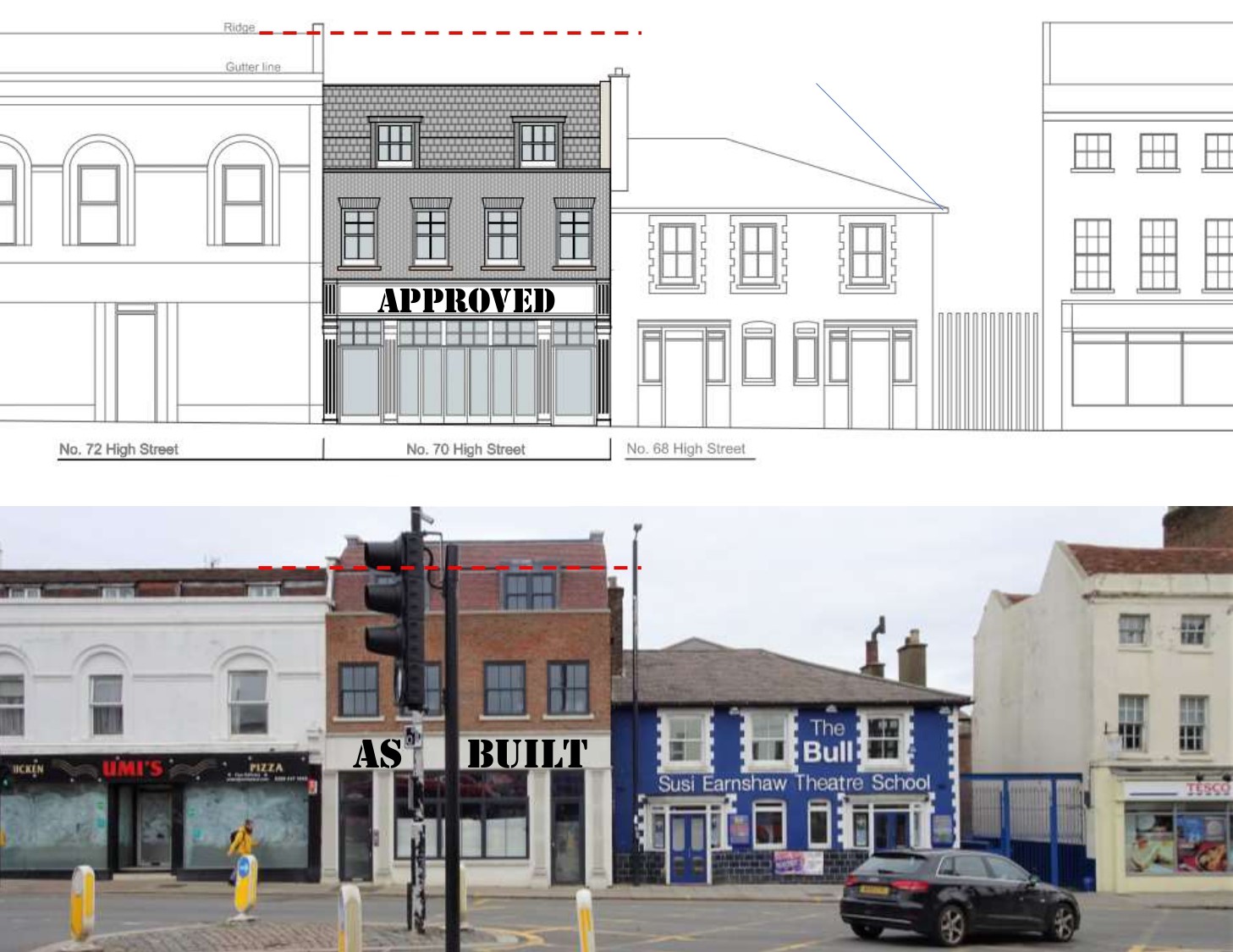
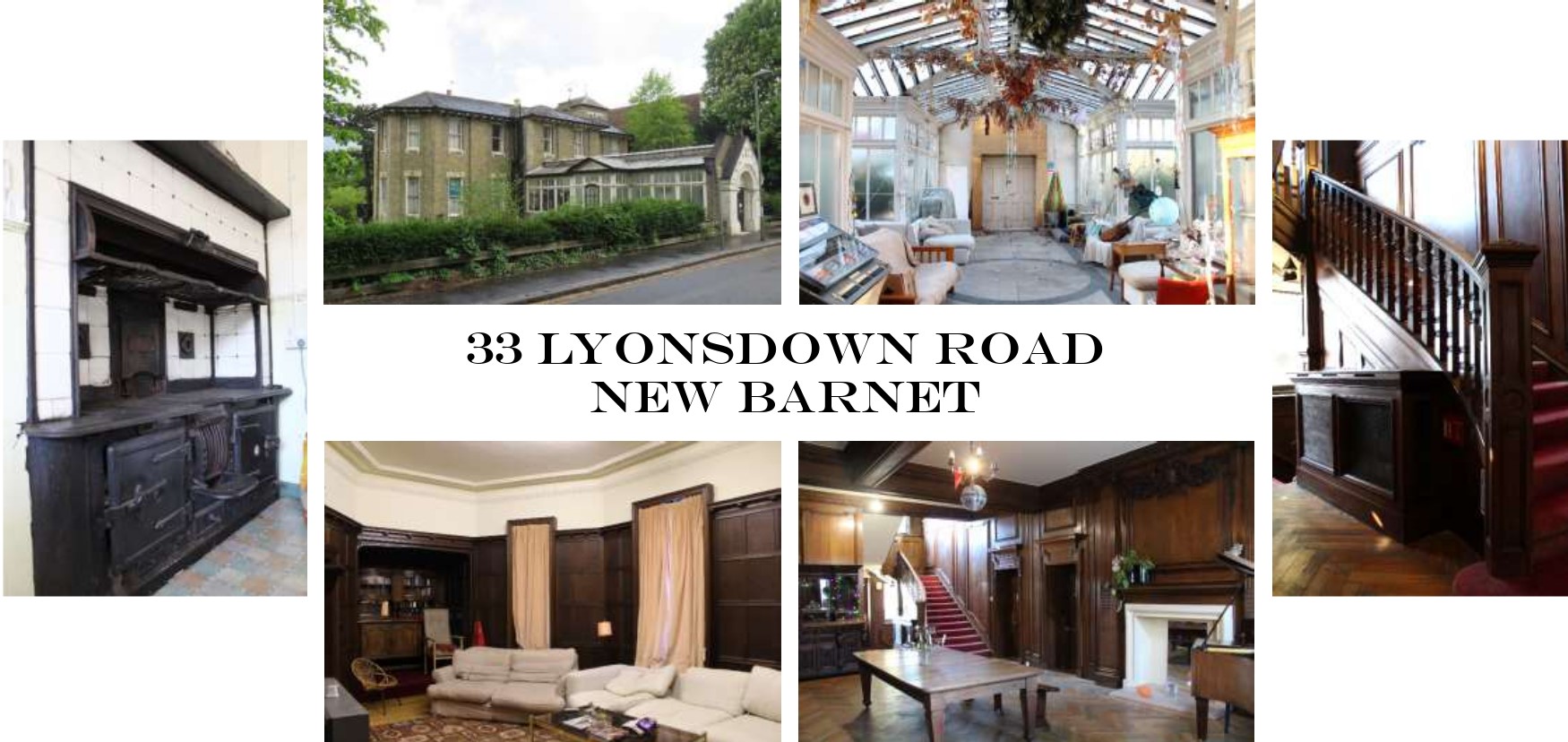
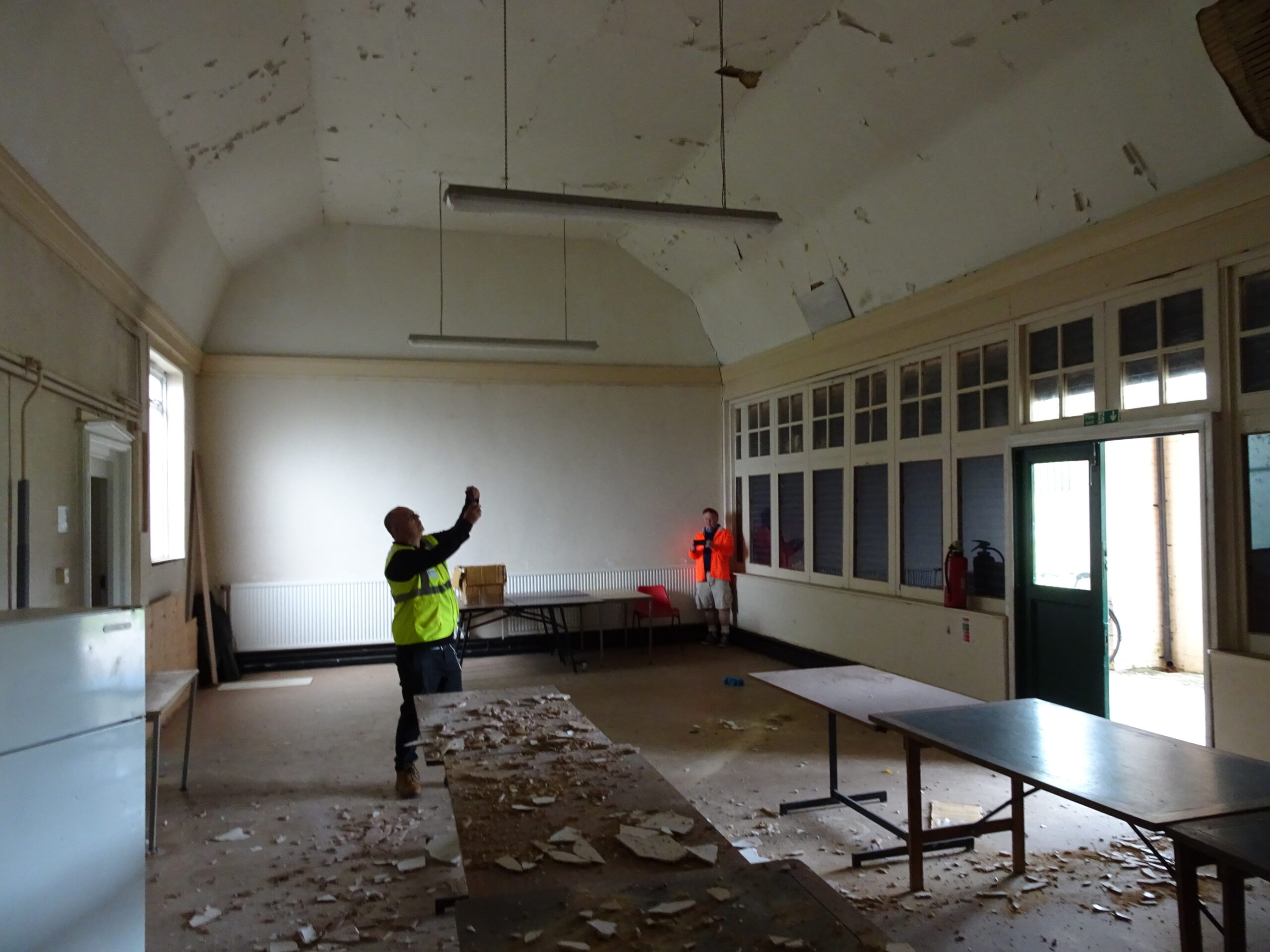
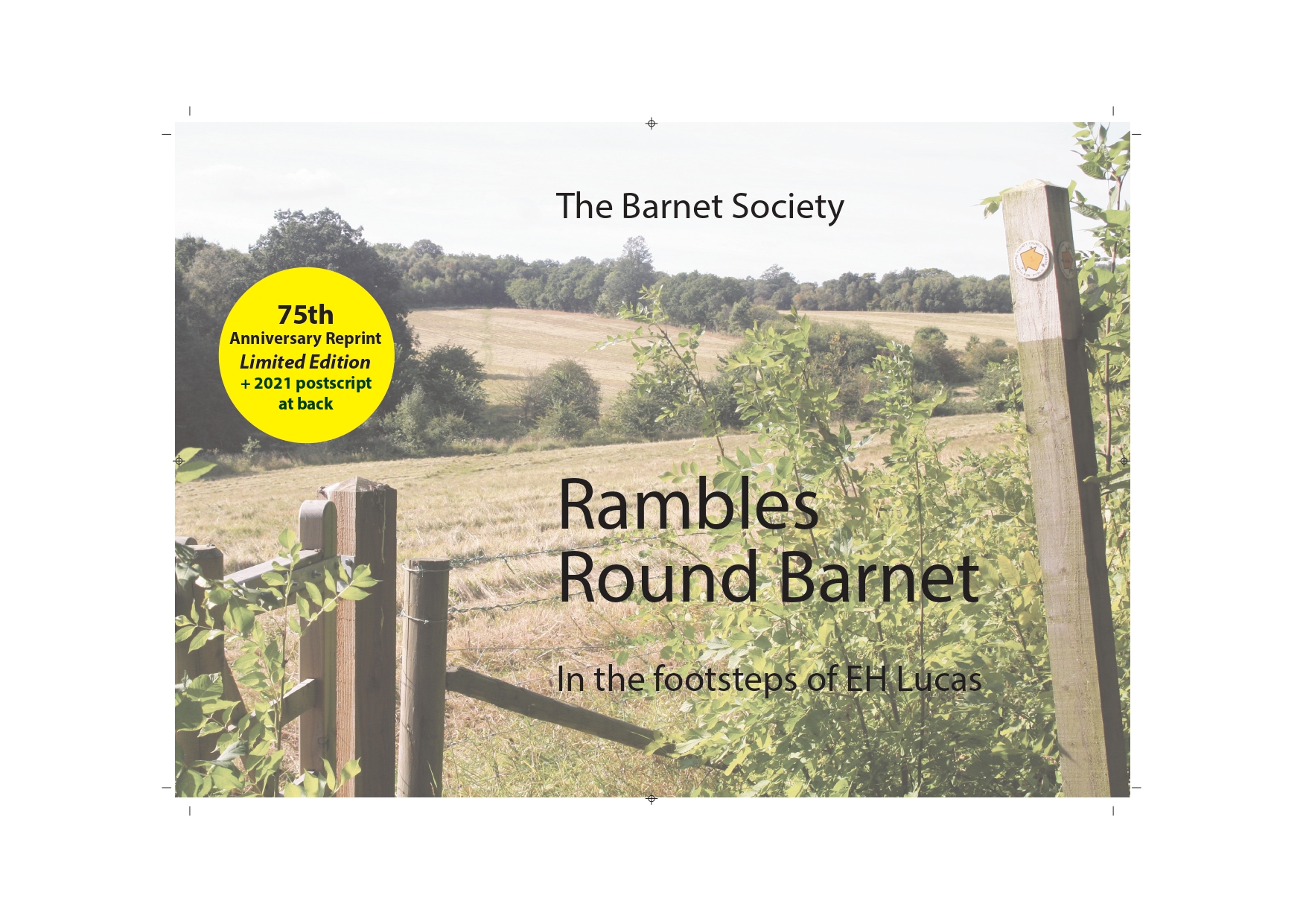
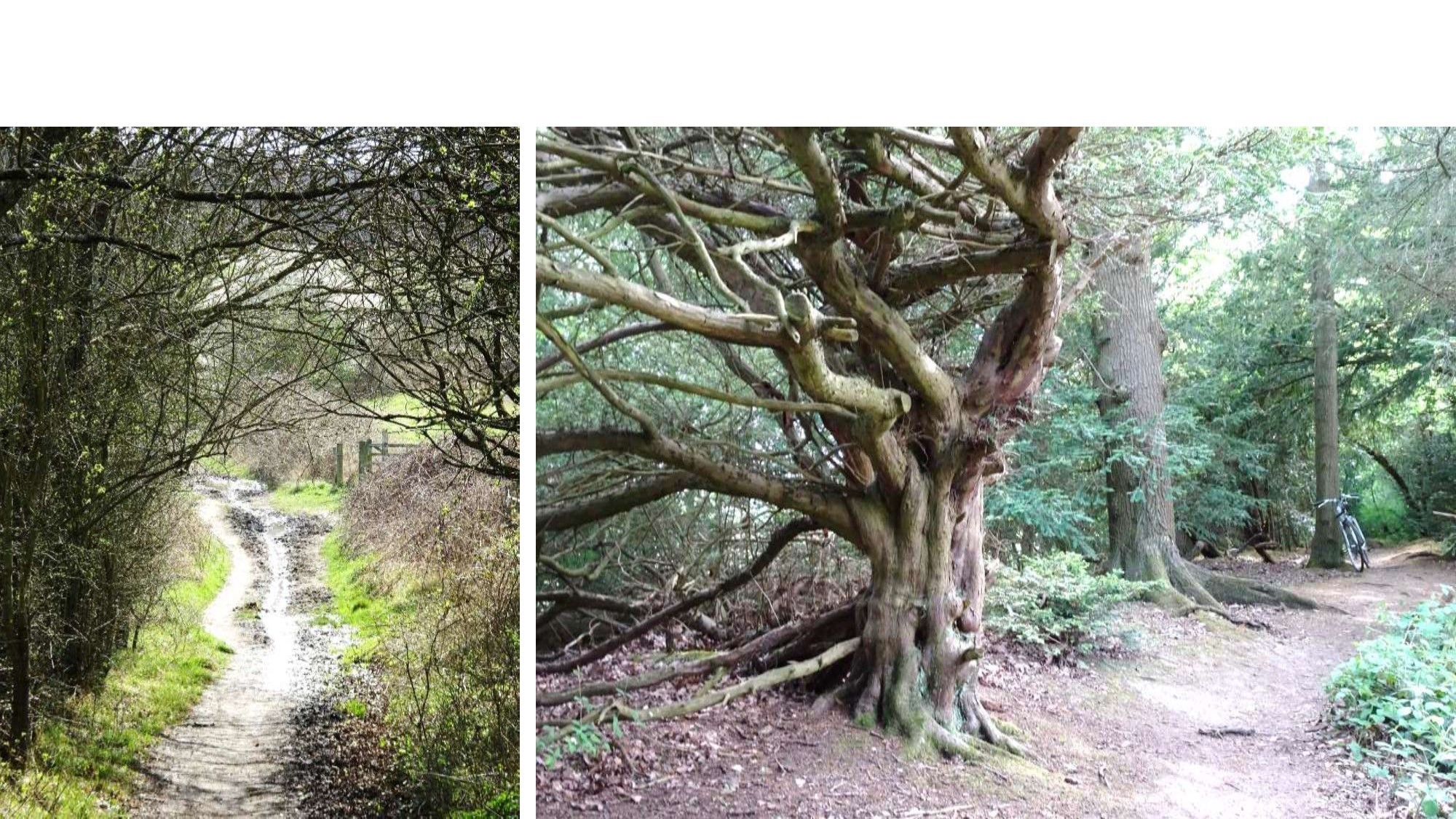
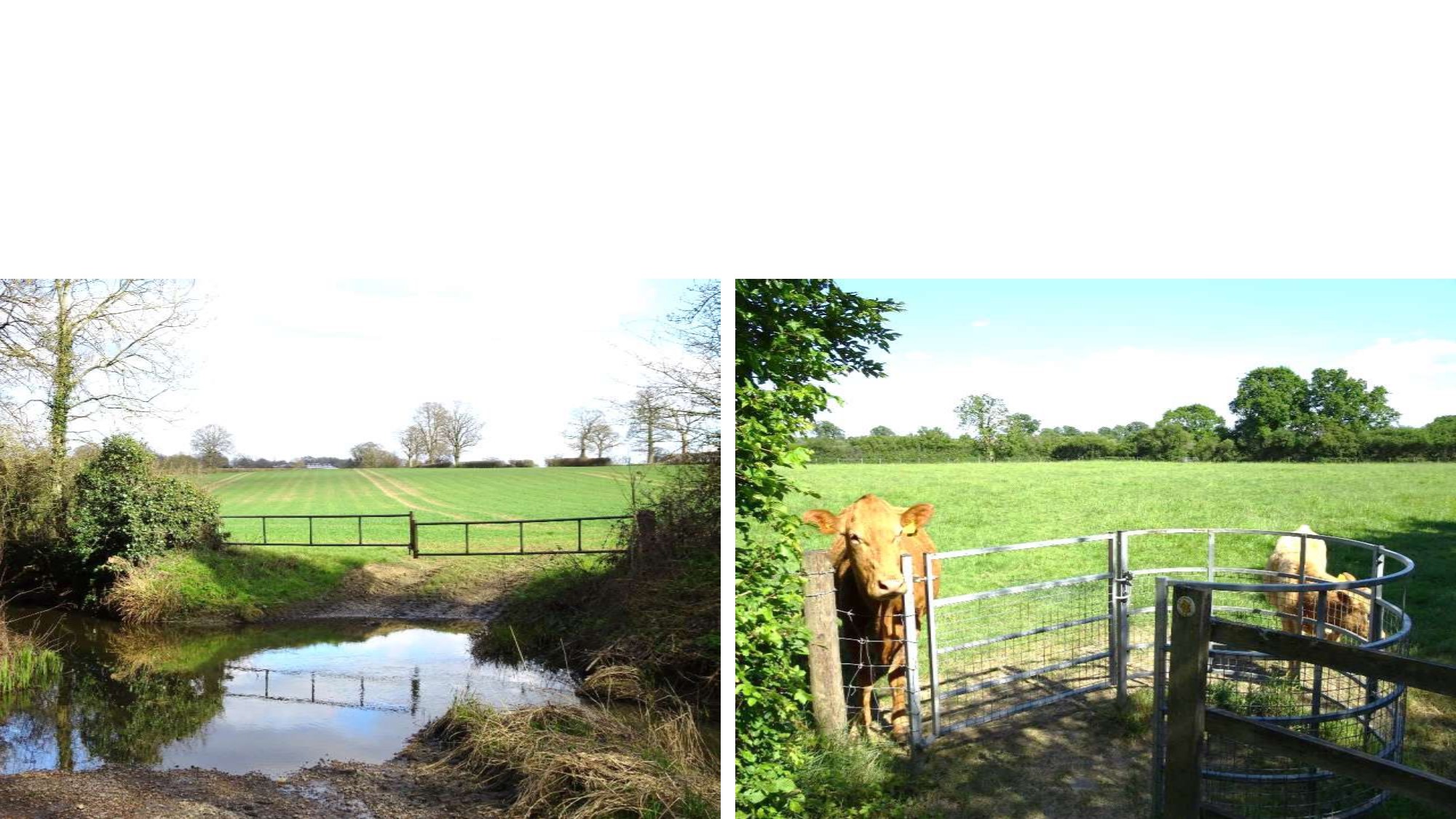
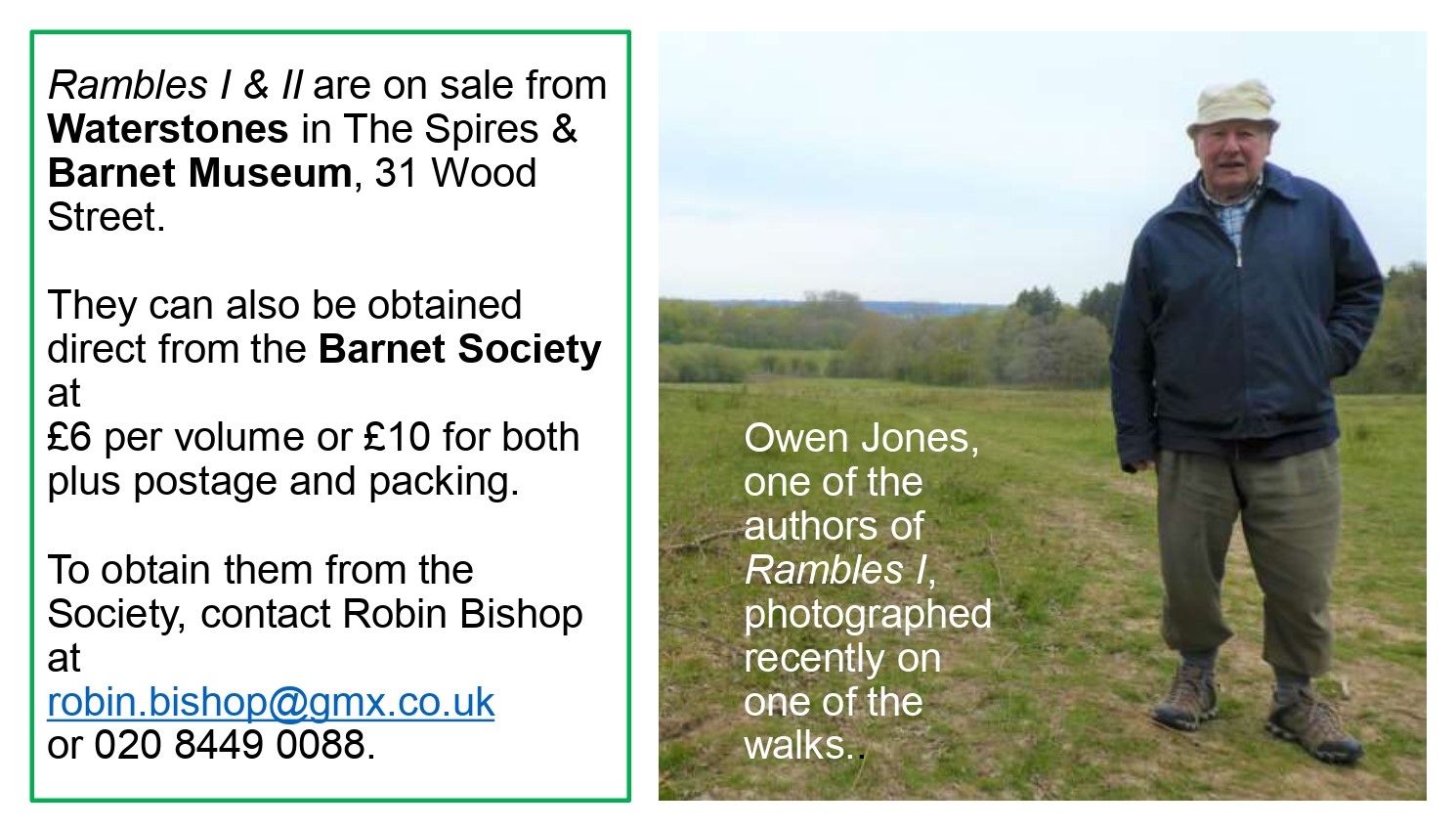
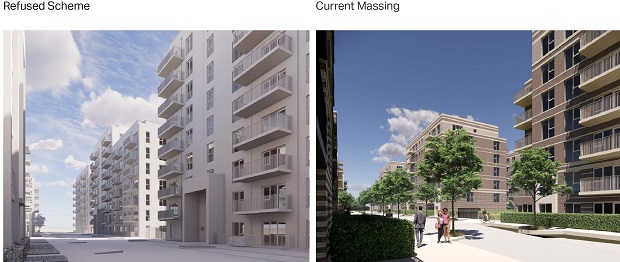
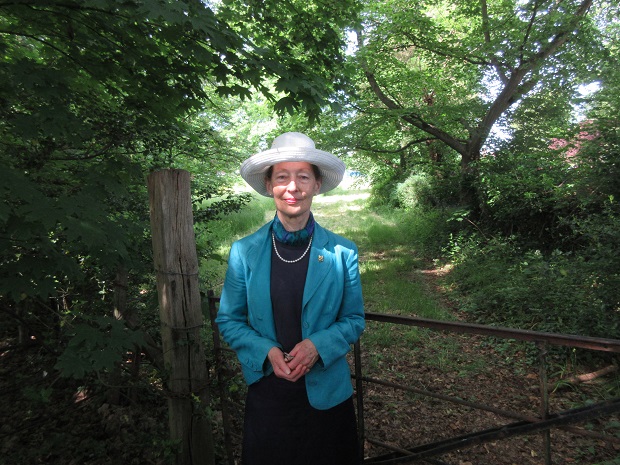
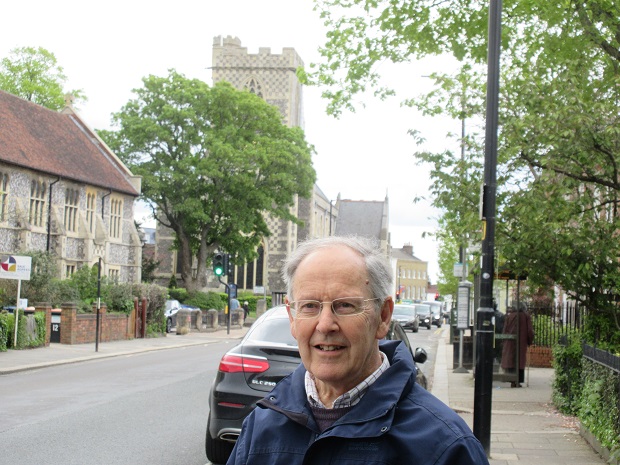
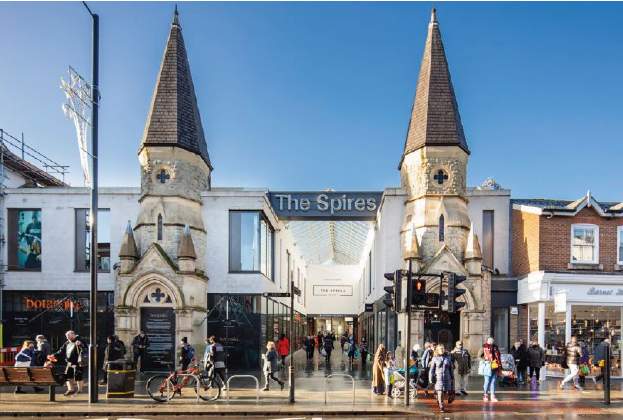
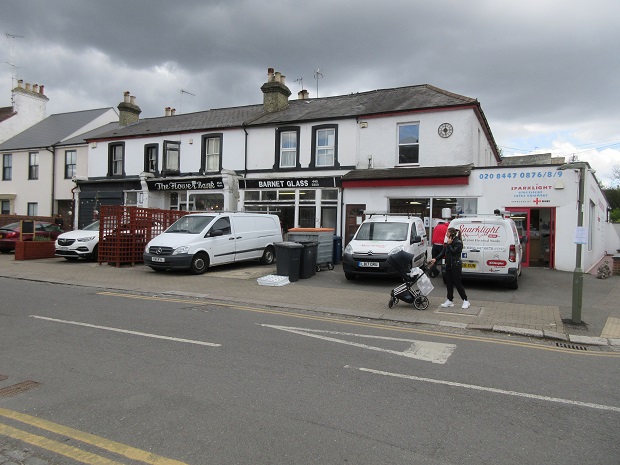
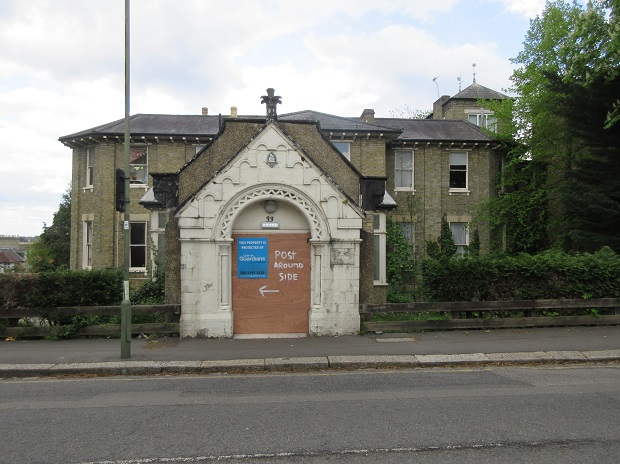
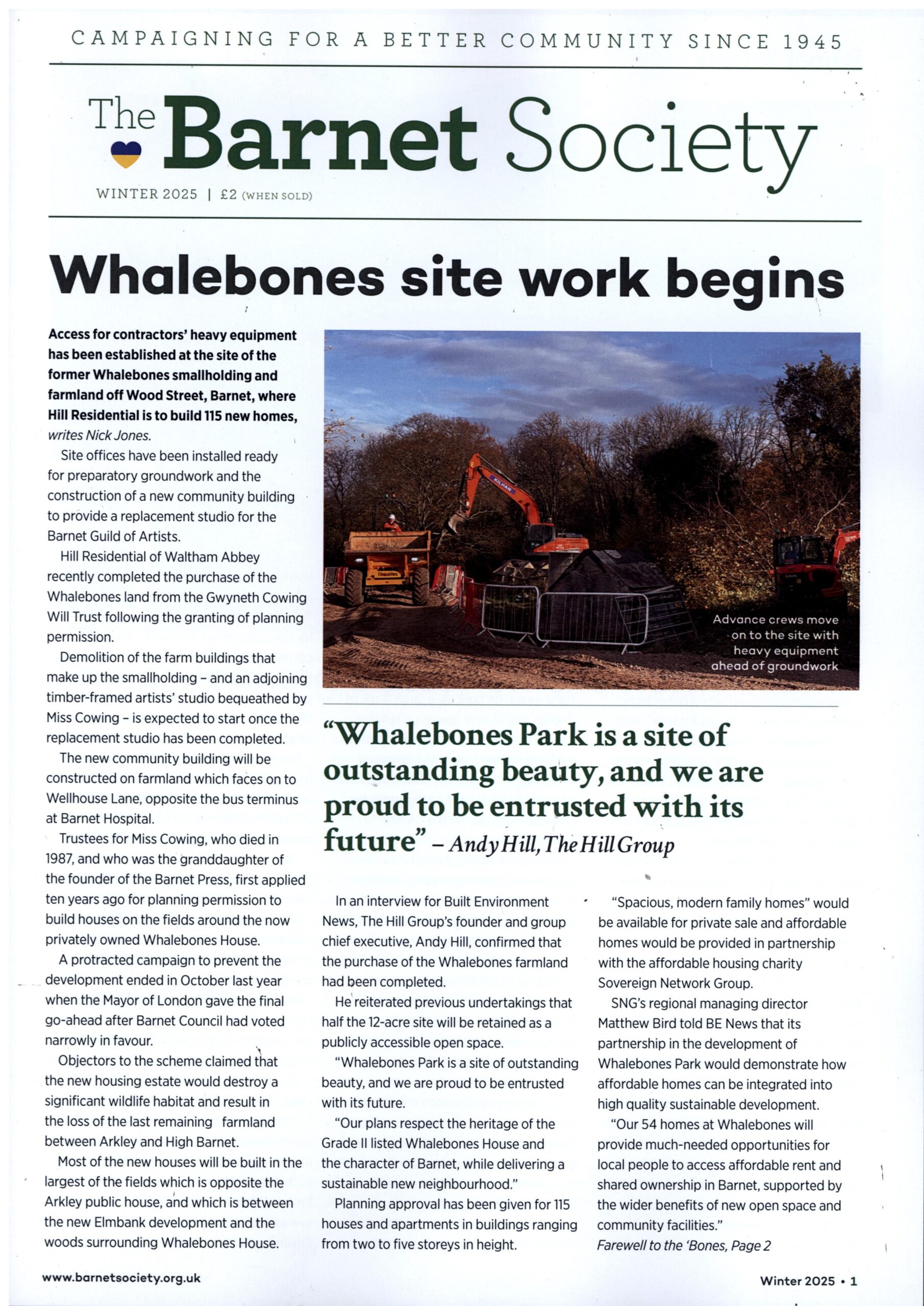
Robin Bishop posted a comment on Public consultation on proposed new house in Christchurch Lane spinney
Tom posted a comment on Public consultation on proposed new house in Christchurch Lane spinney
TERENCE DRISCOLL posted a comment on Years of neglect prompting residents’ bid to get Barnet’s former Quinta Youth Club registered as asset of community value
Disgruntled Resident posted a comment on Sad loss of an imposing Victorian villa built when New Barnet was developed after the opening of its main line railway station